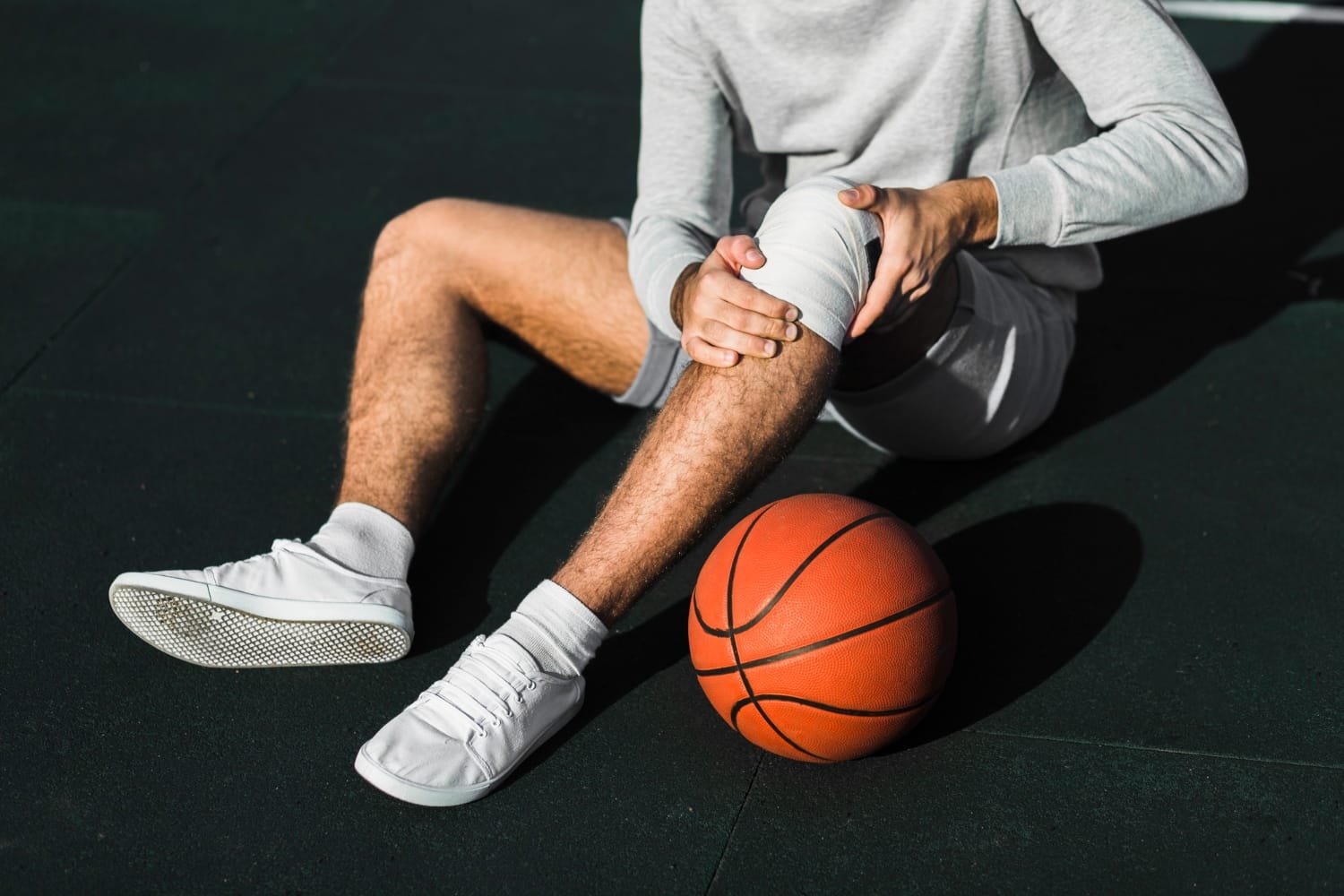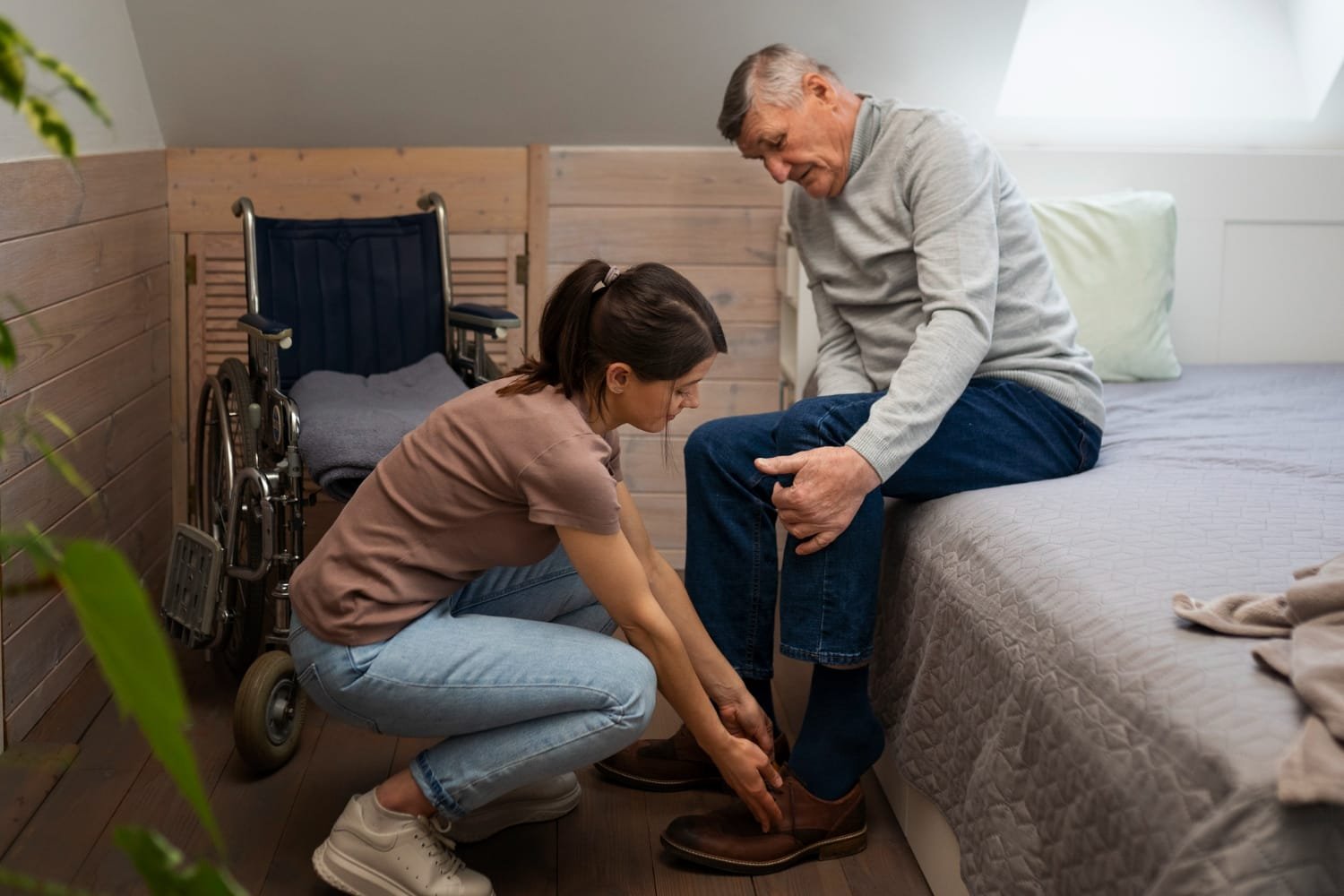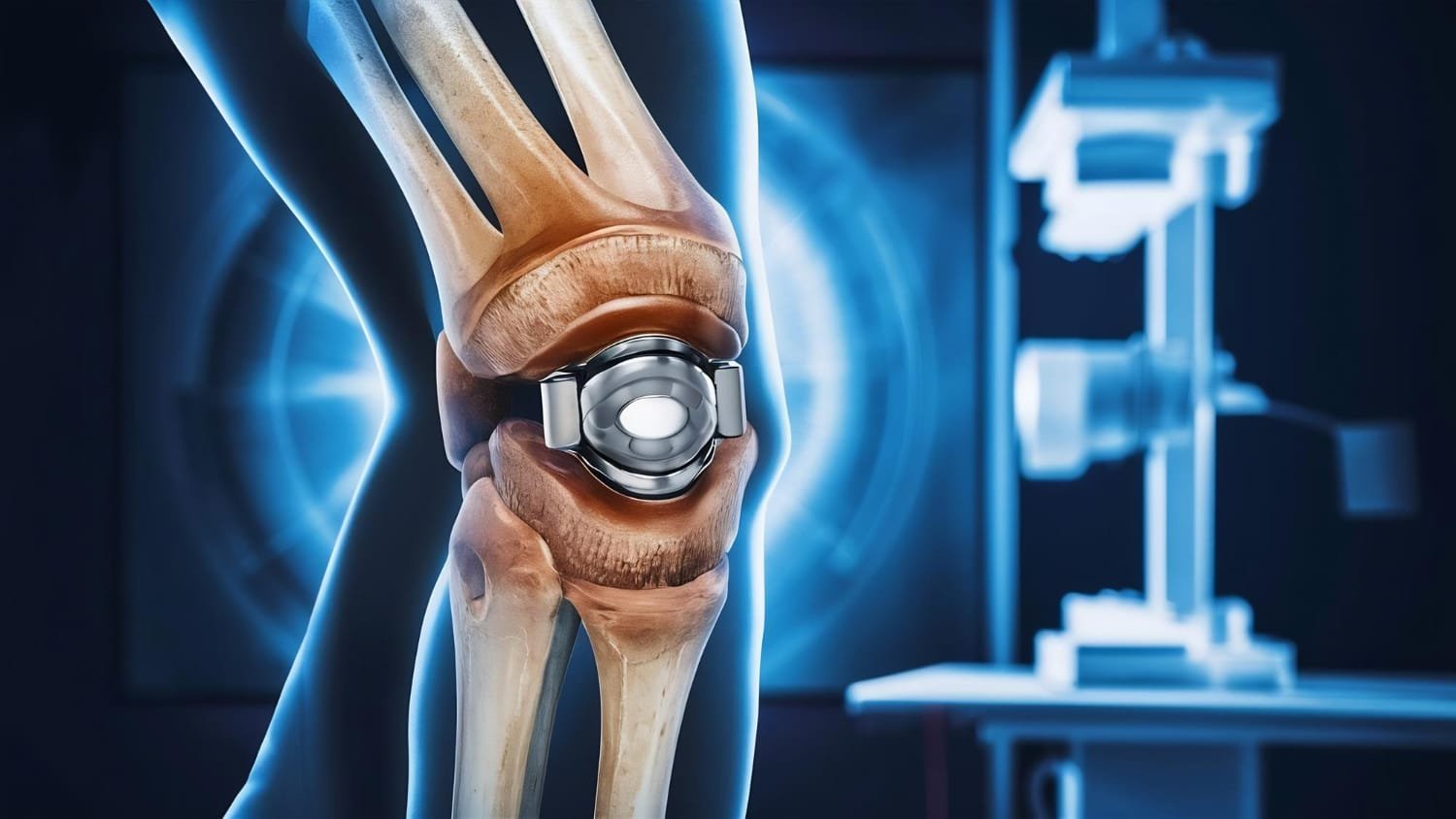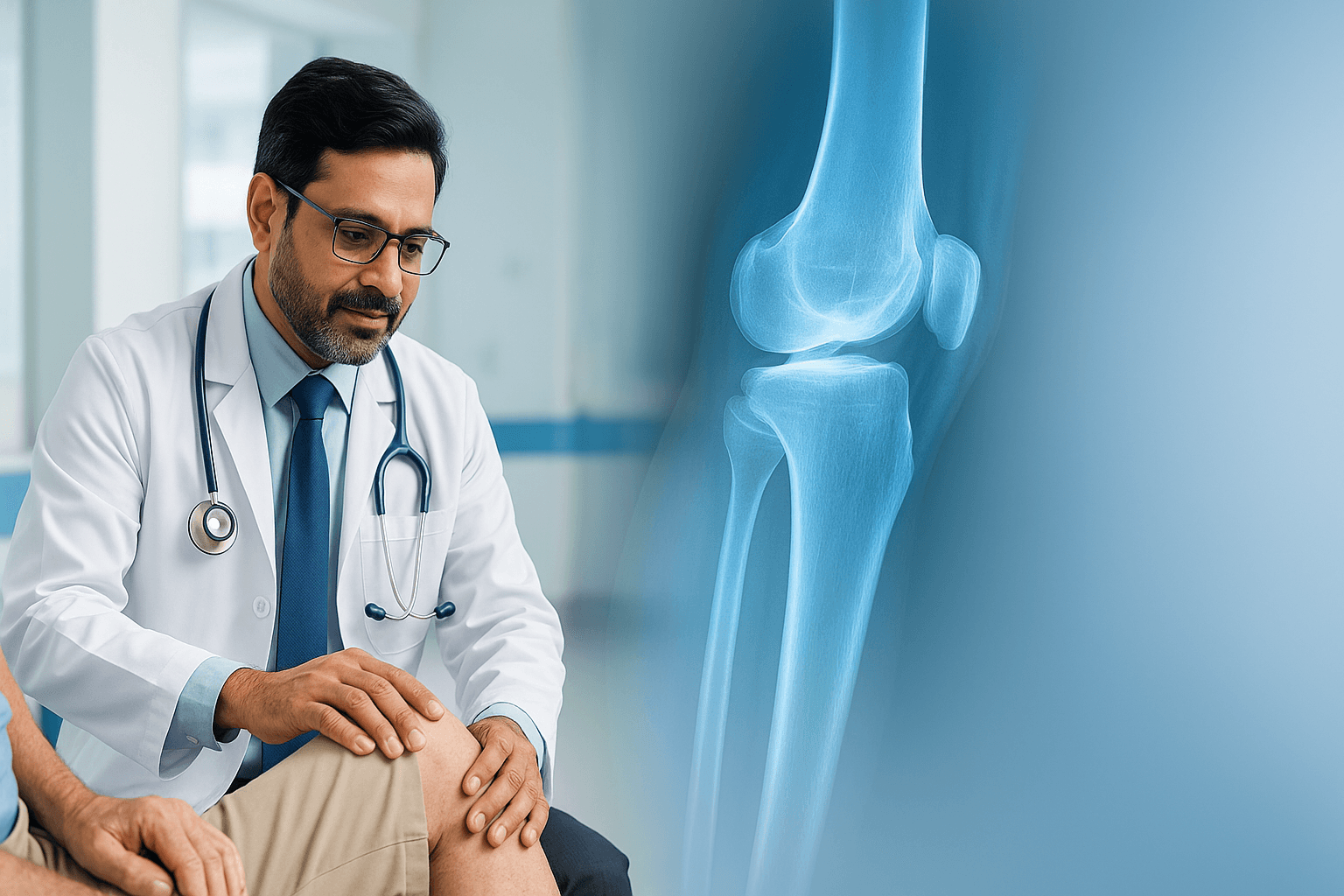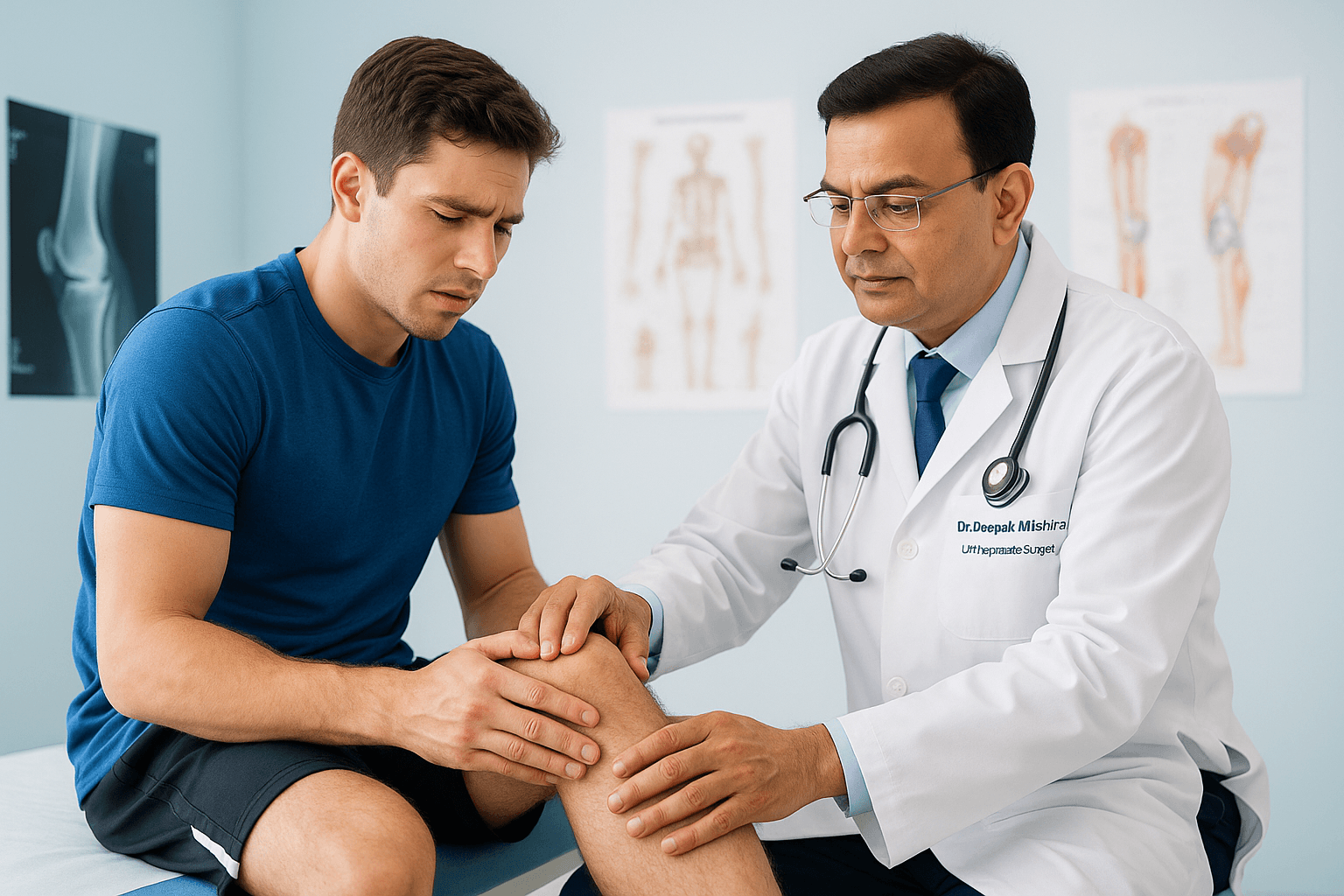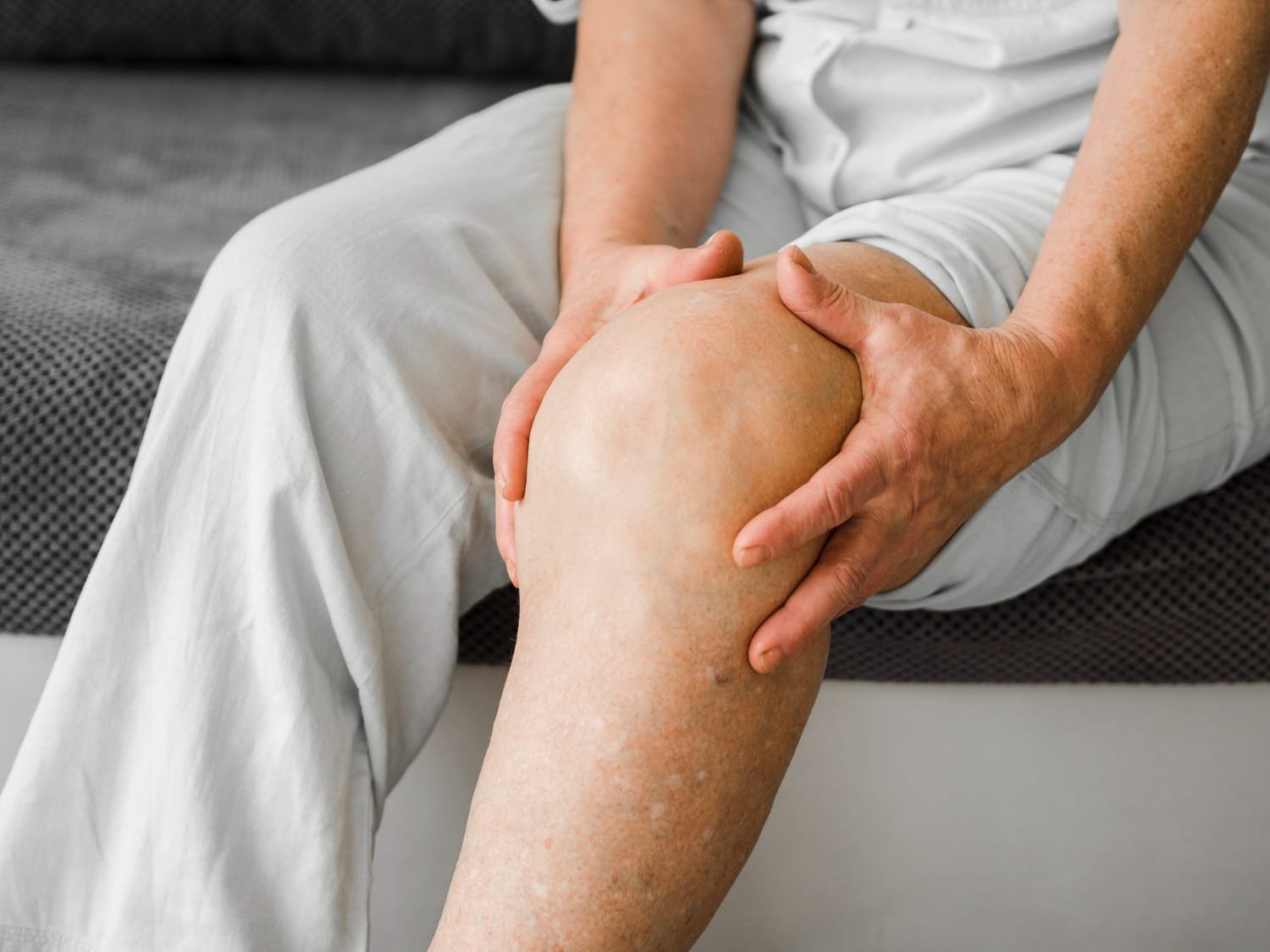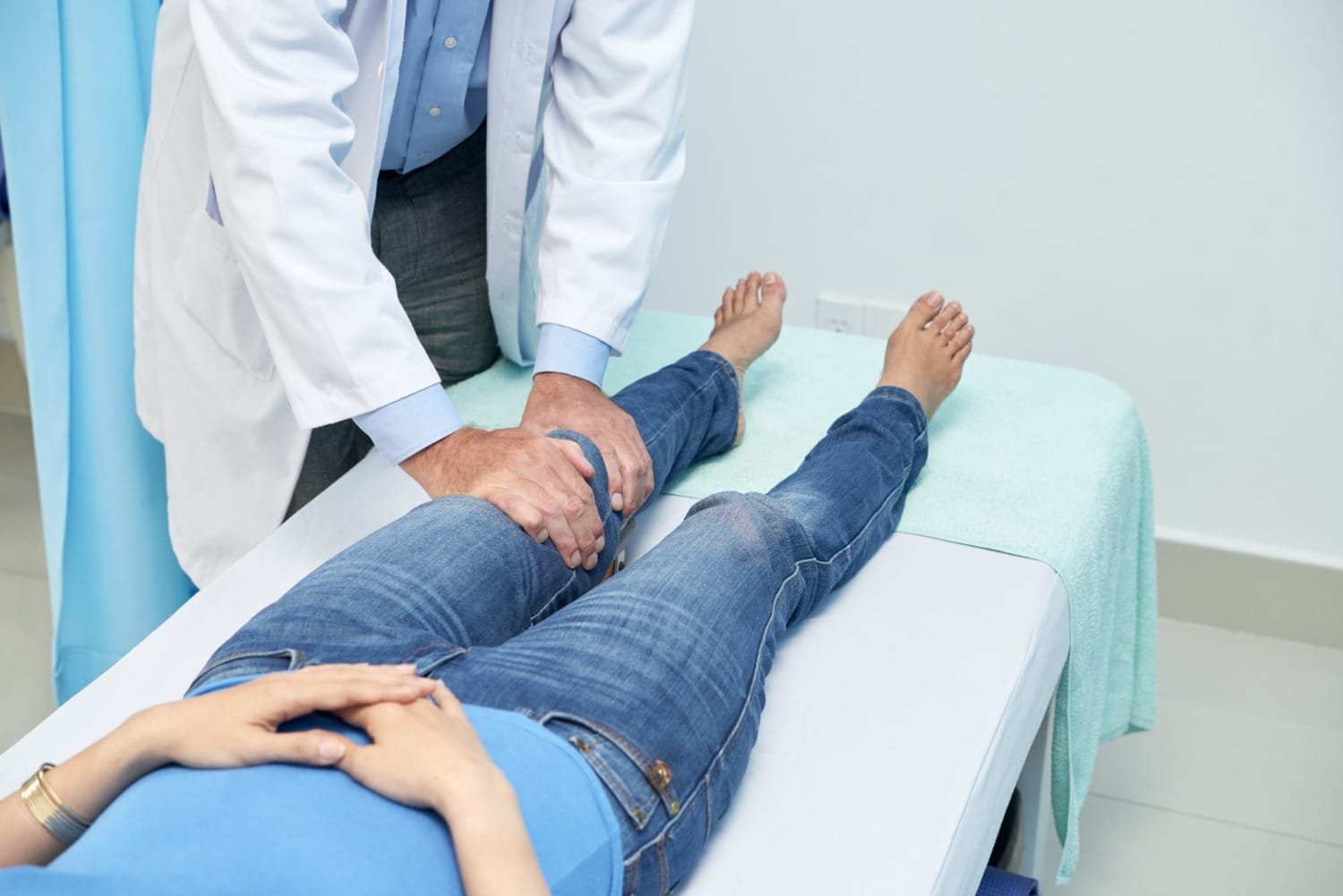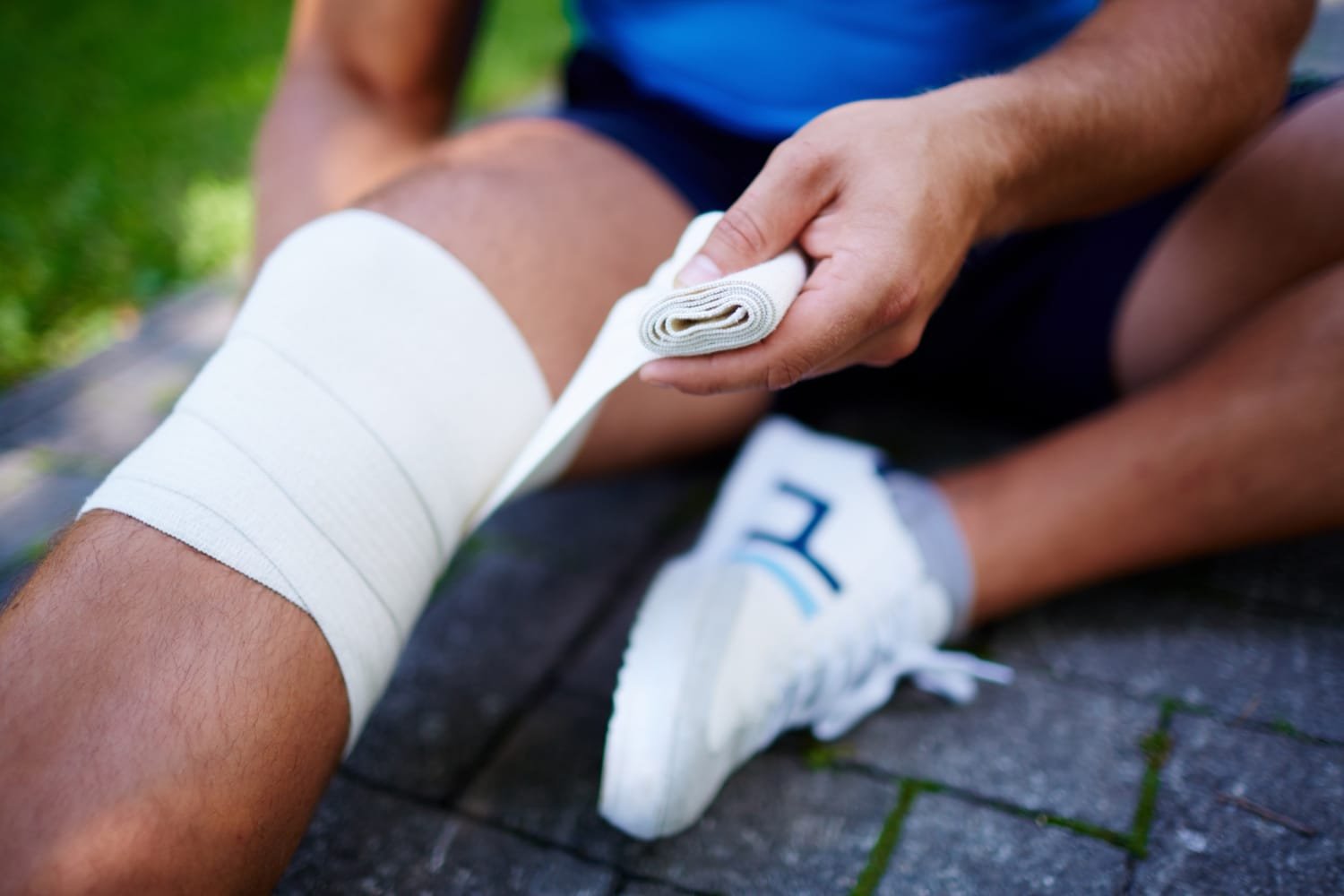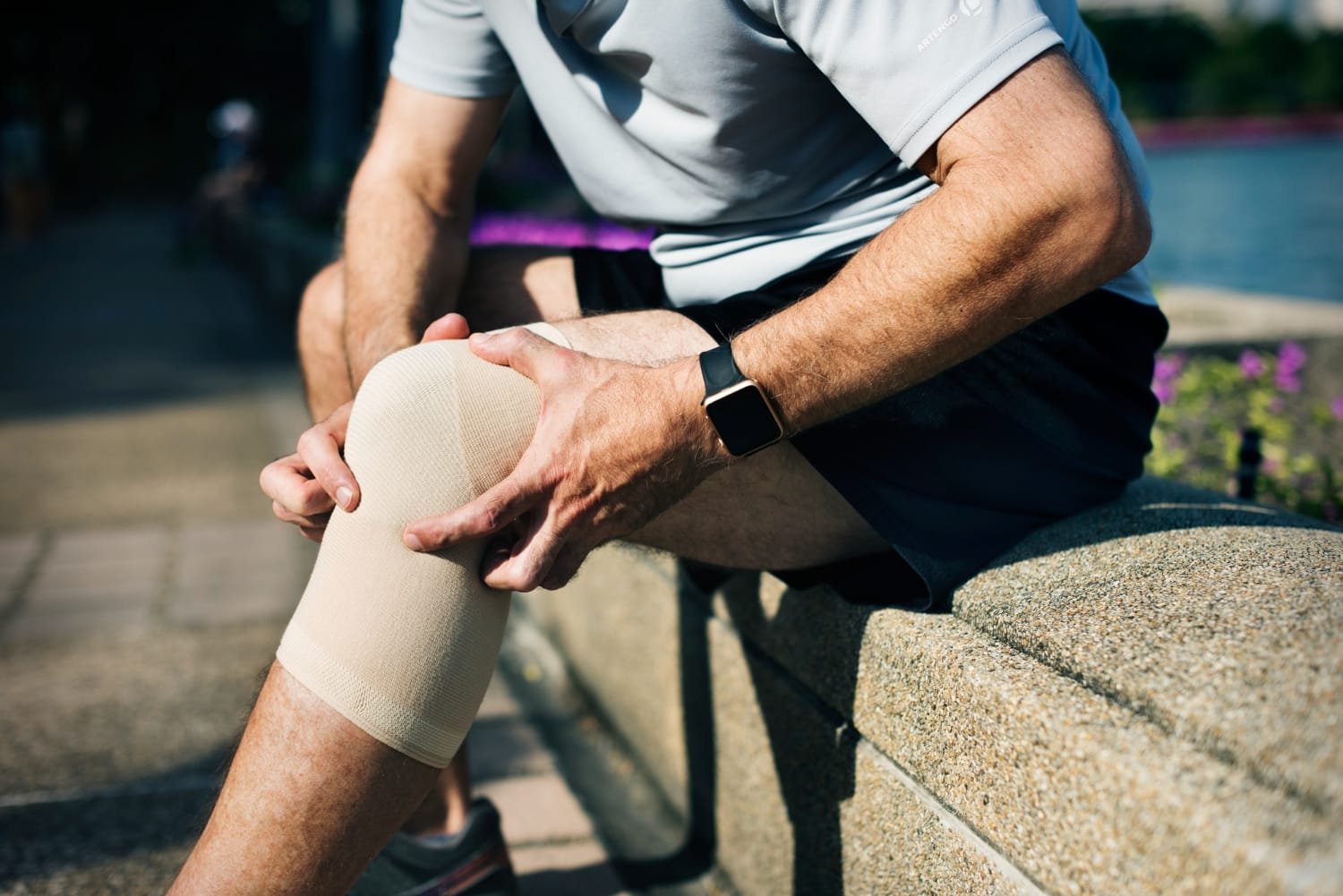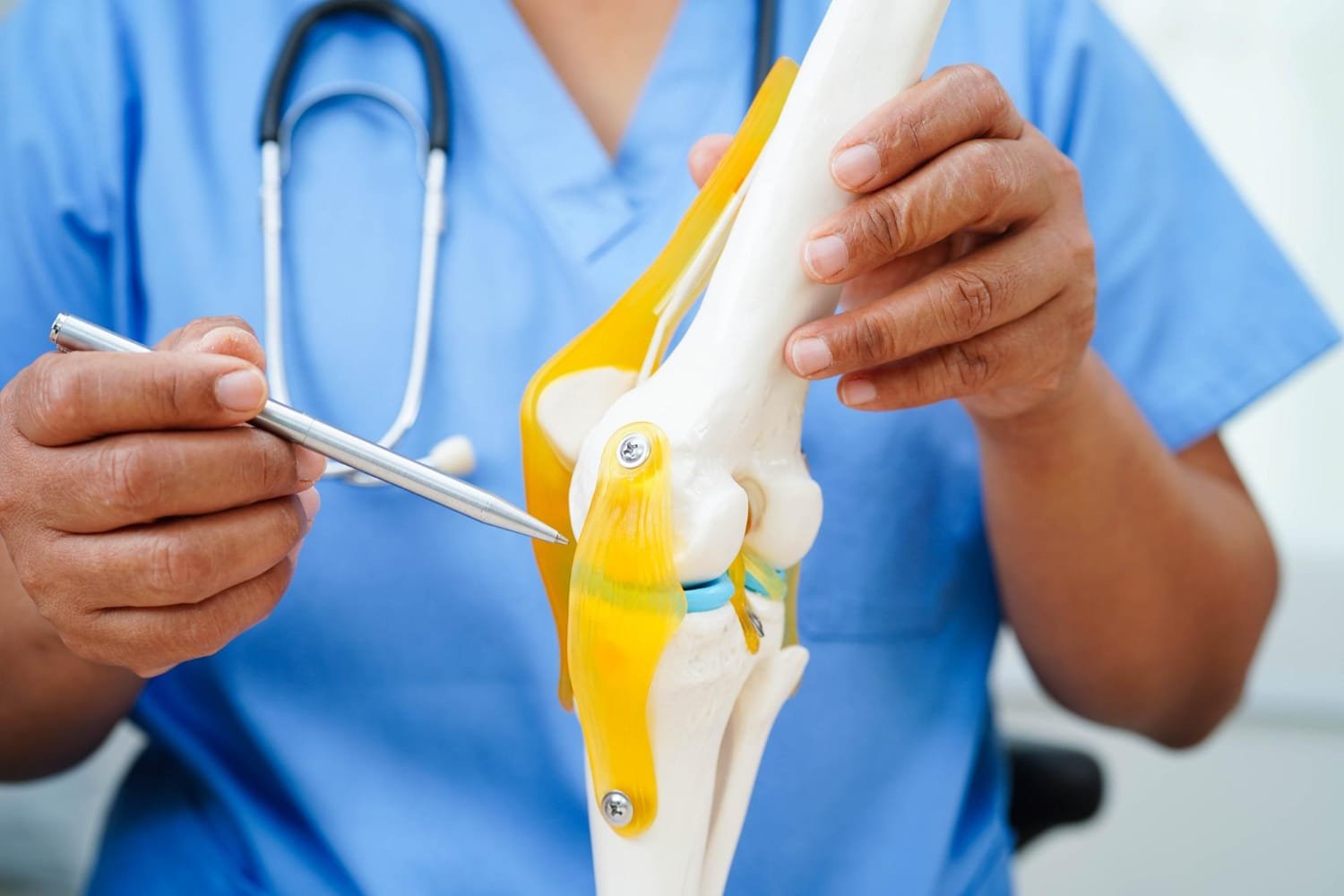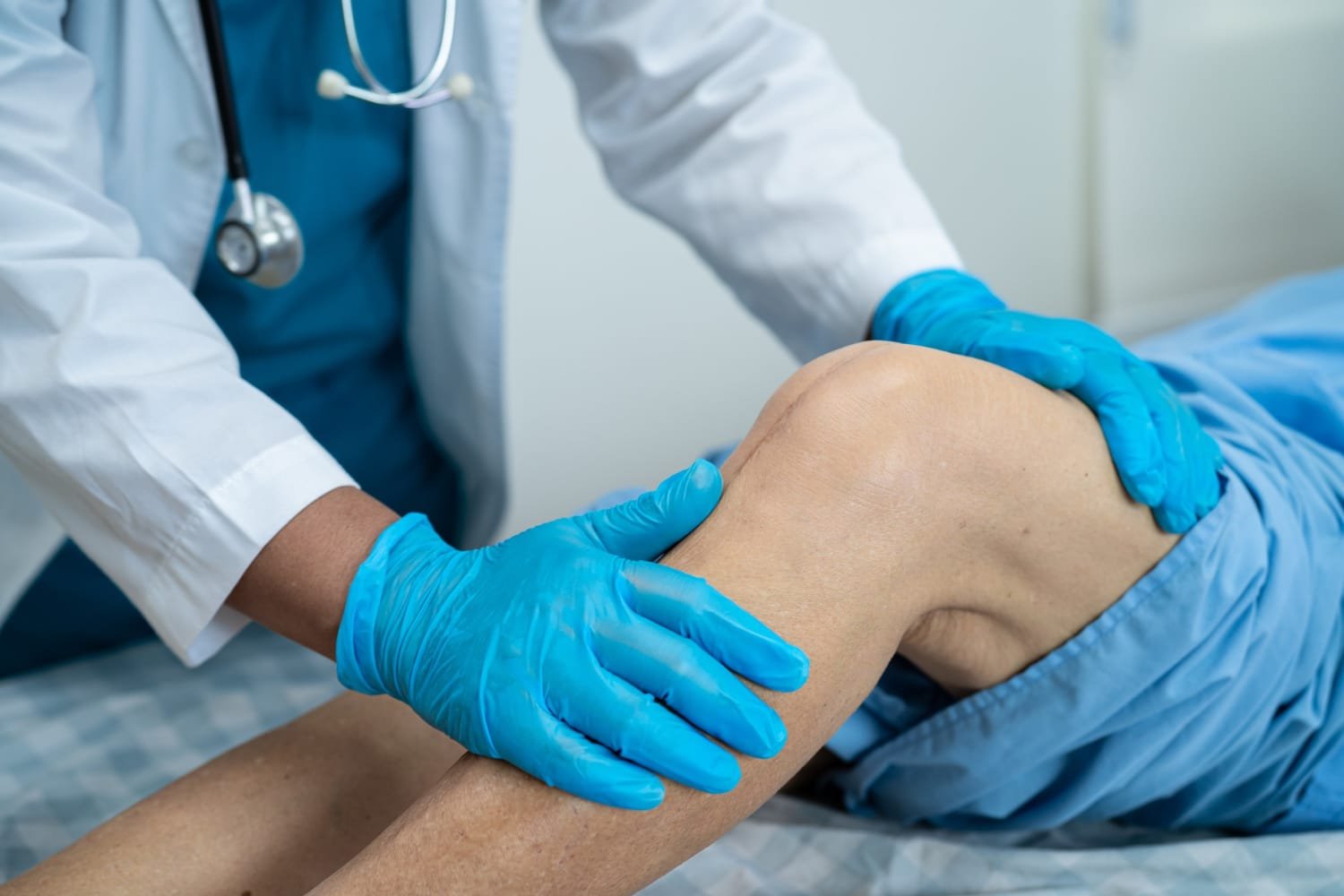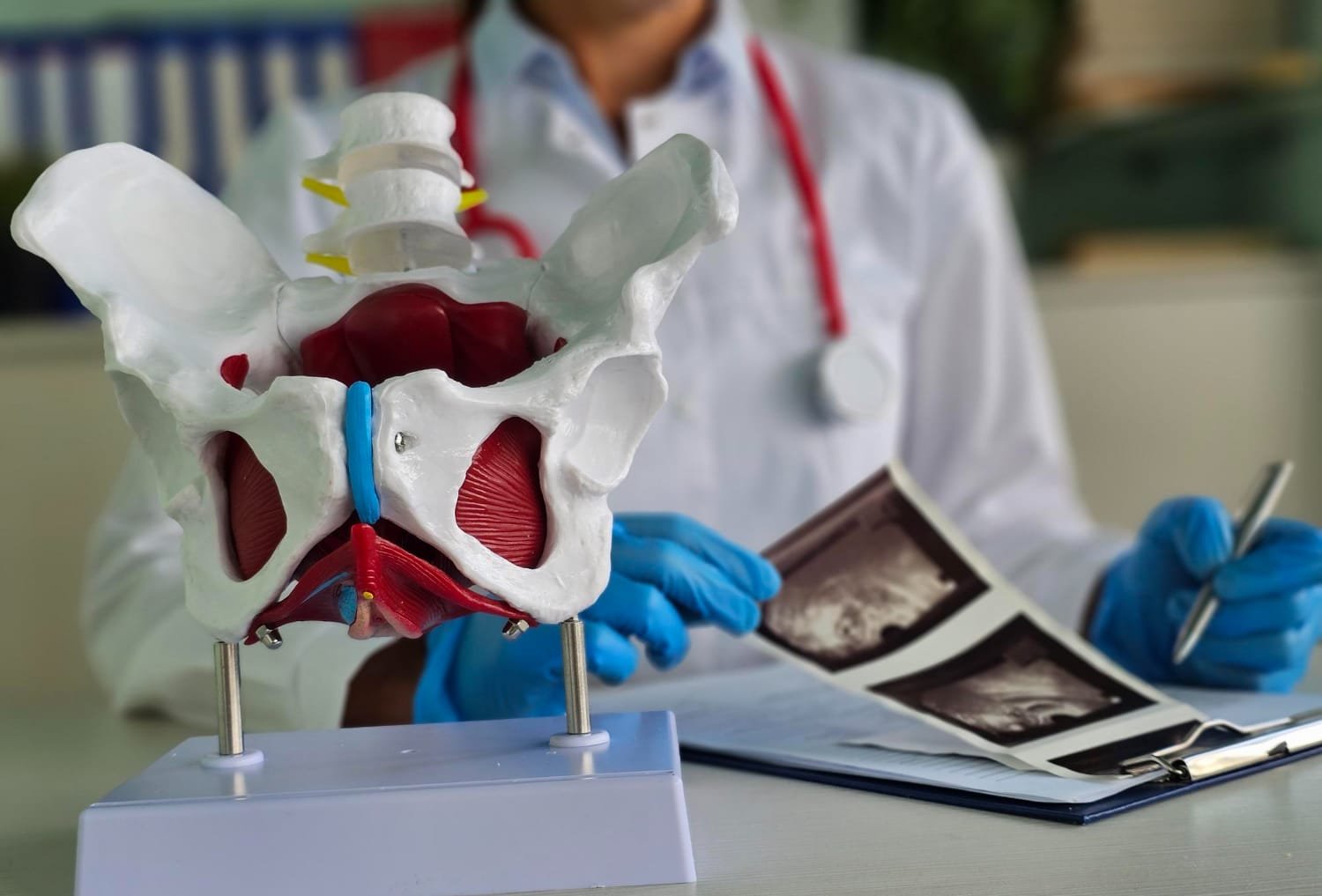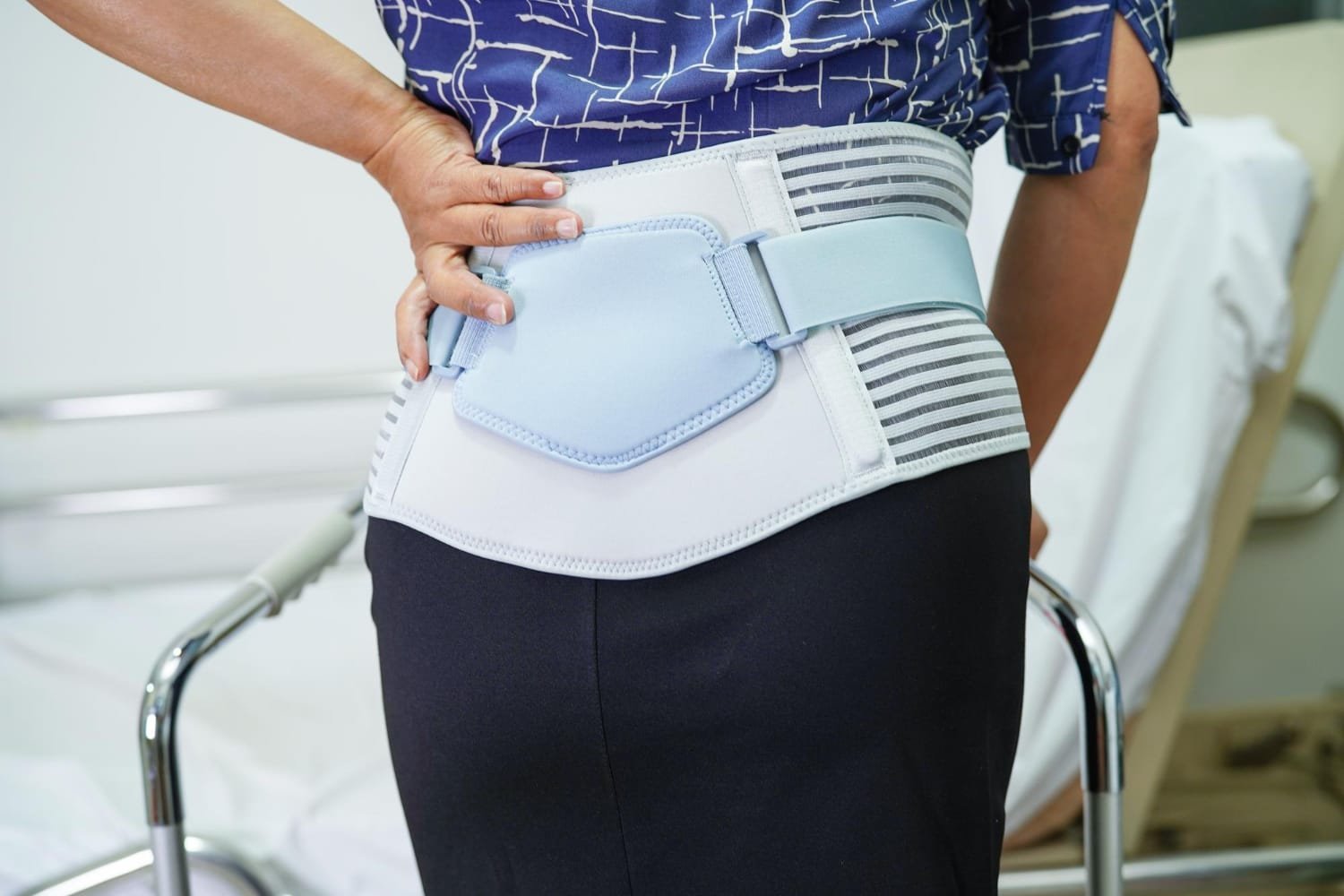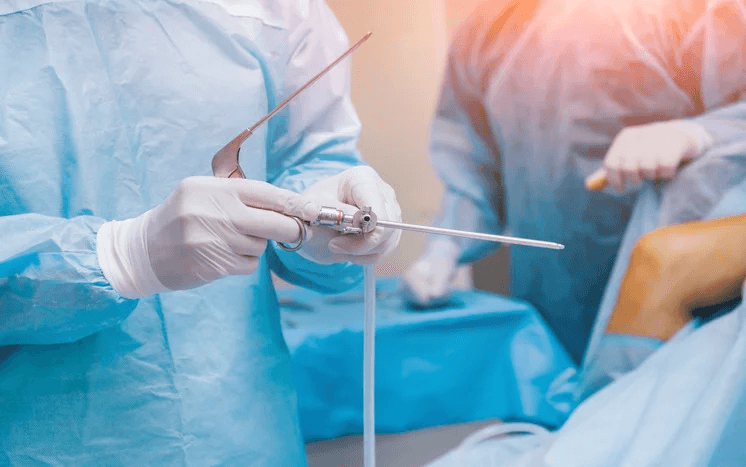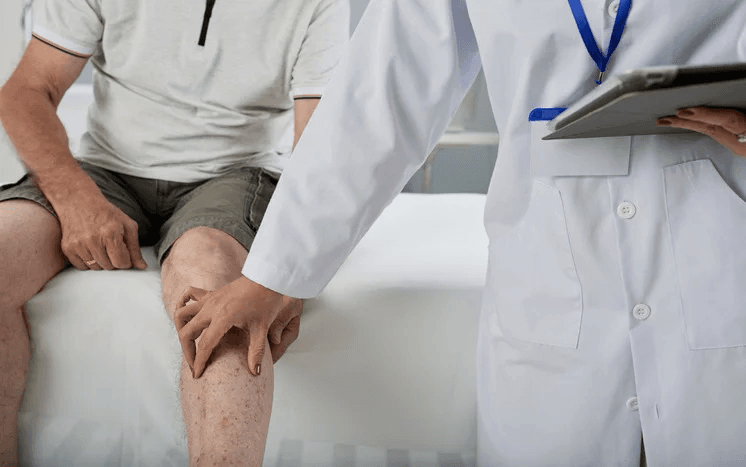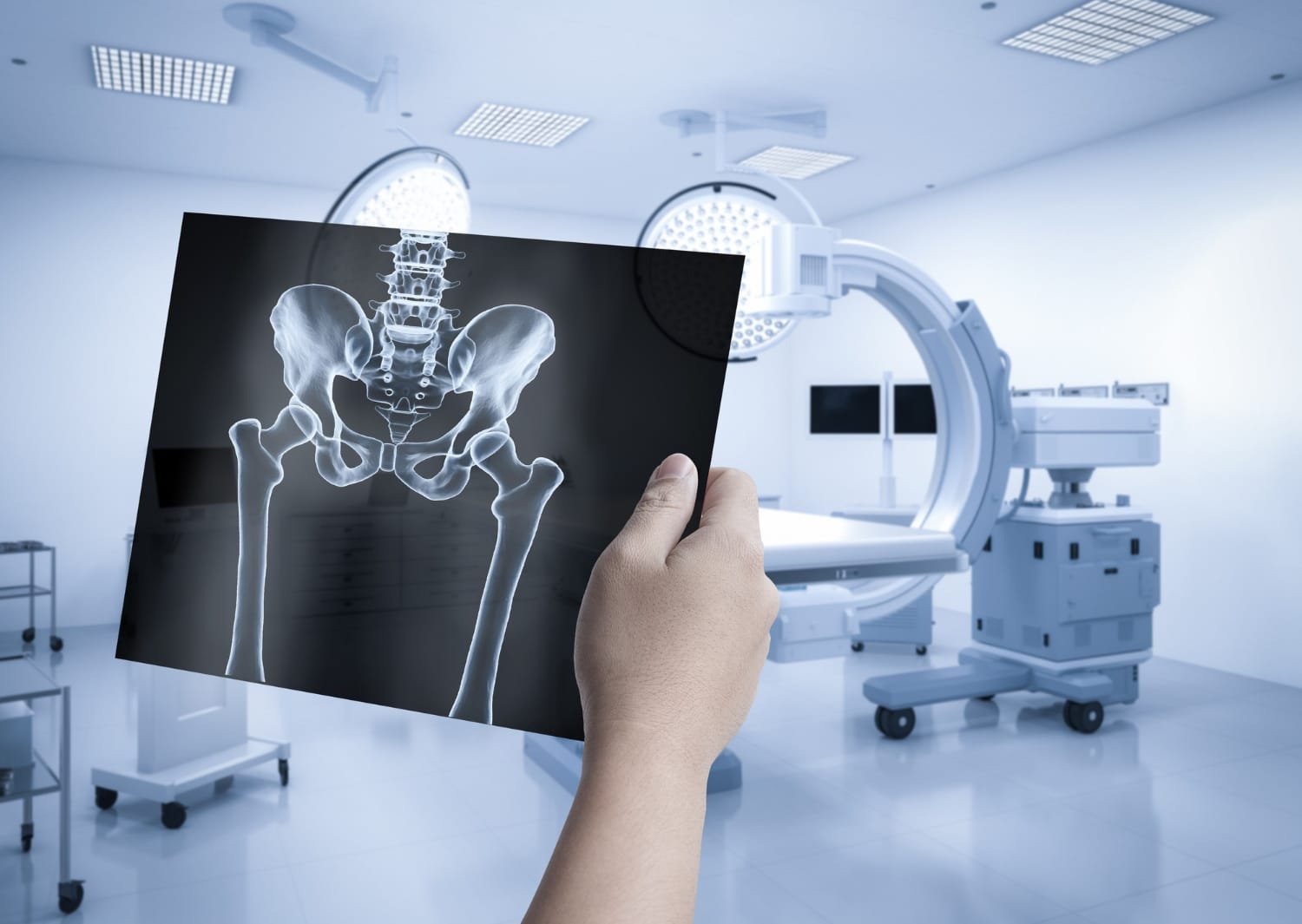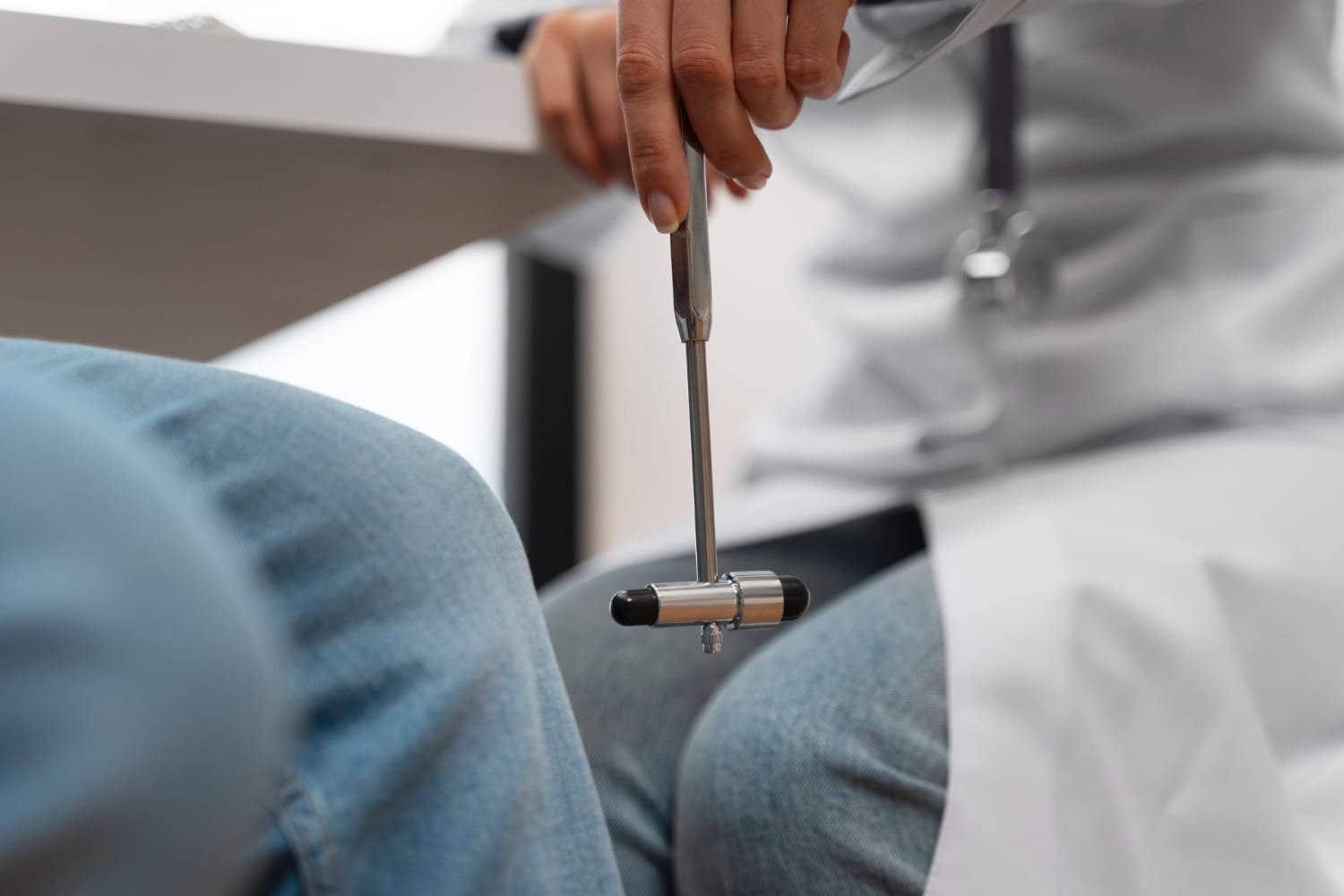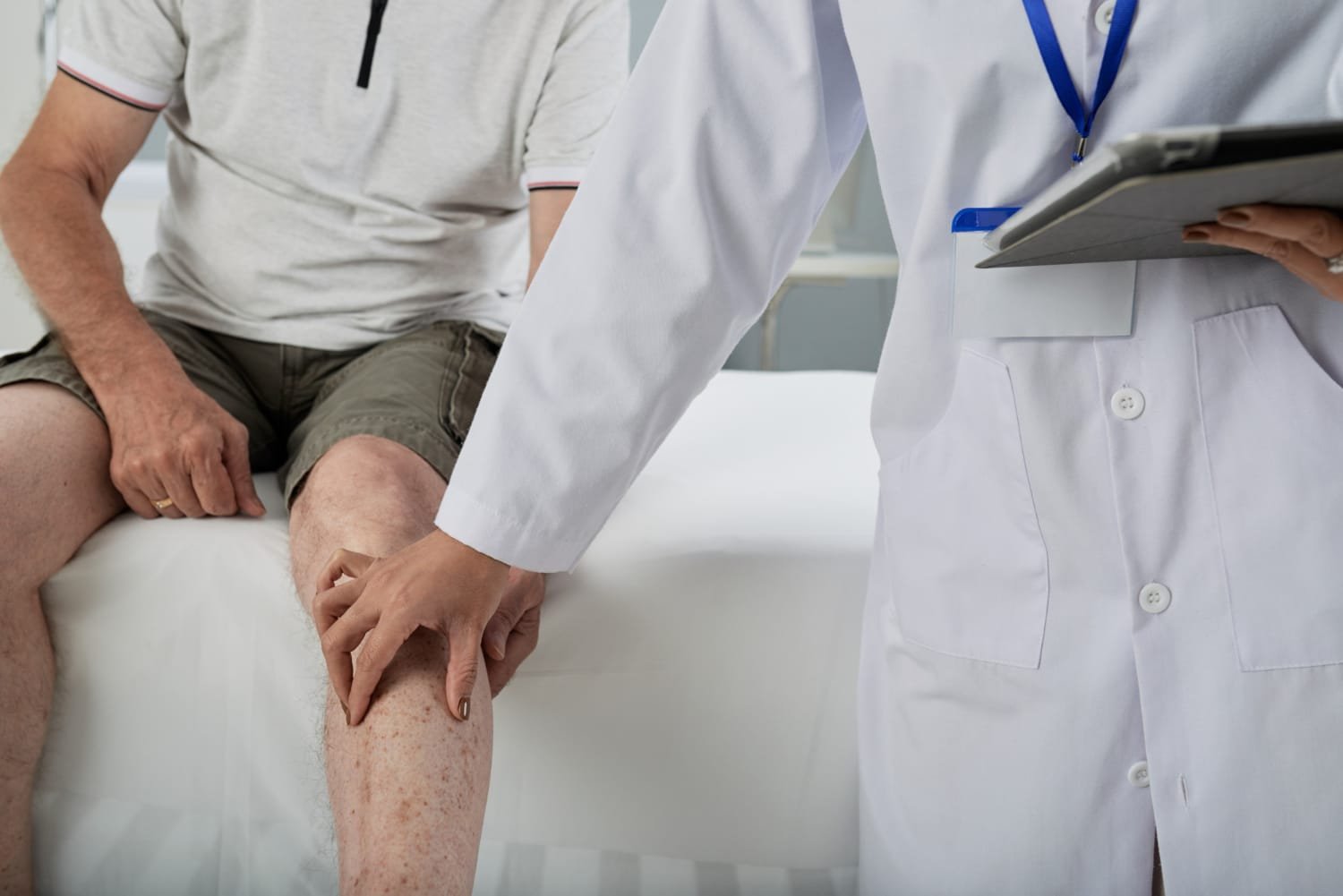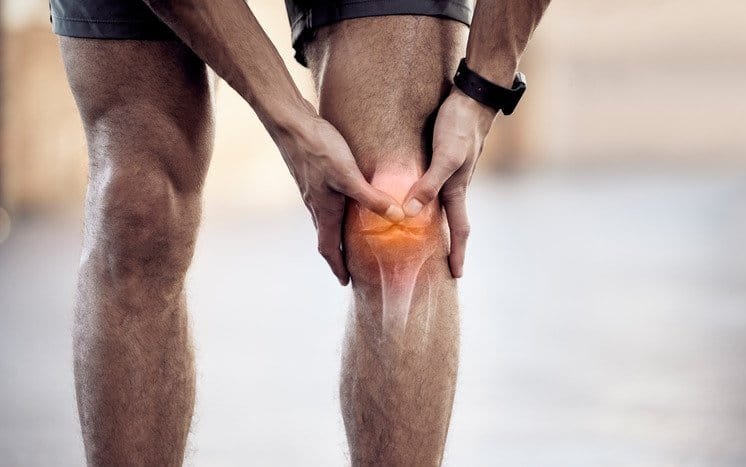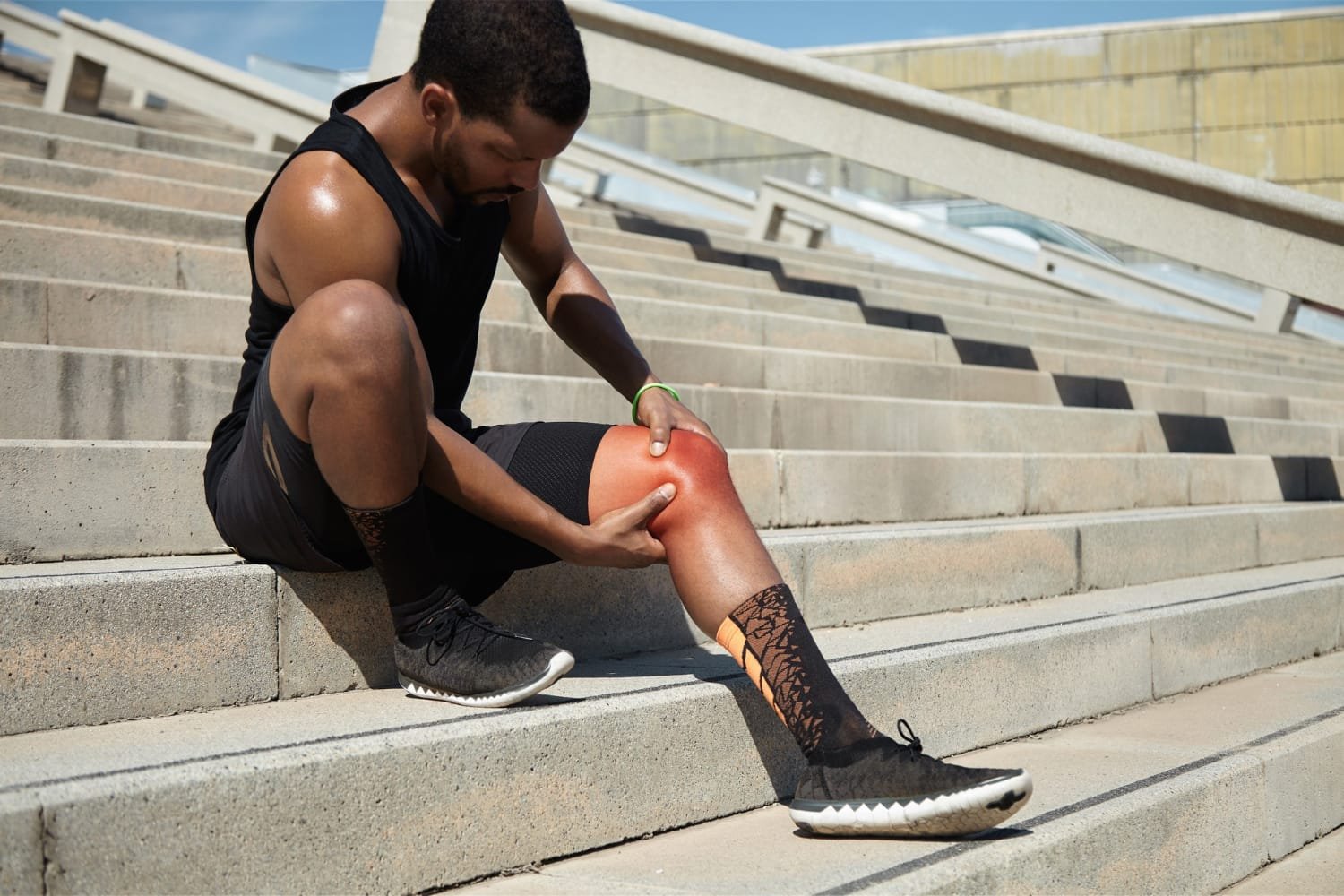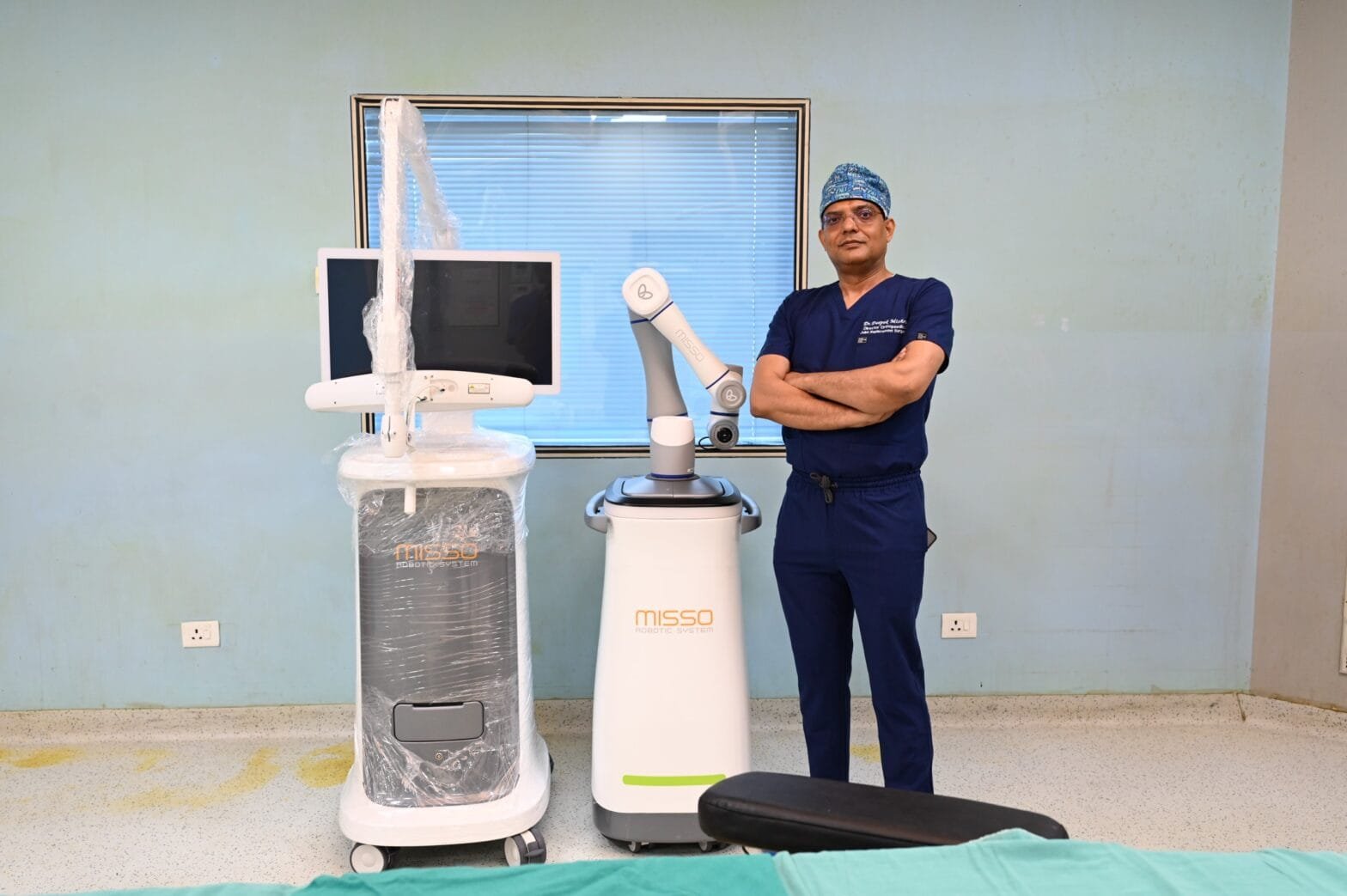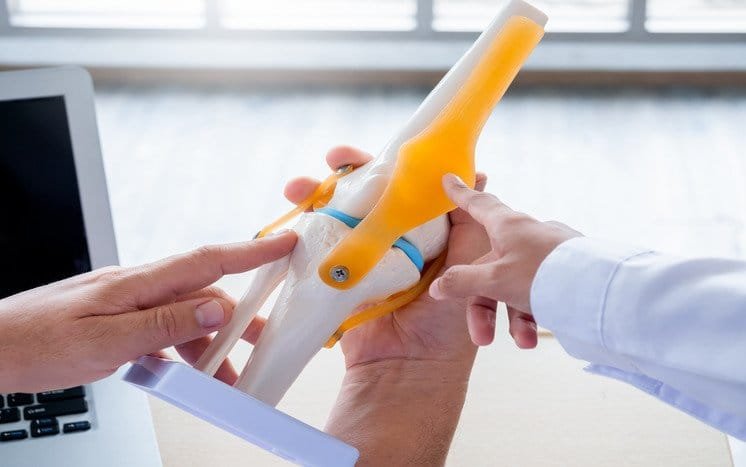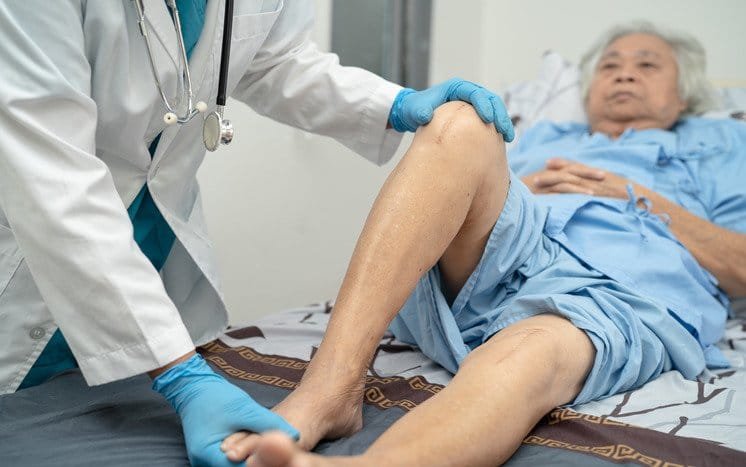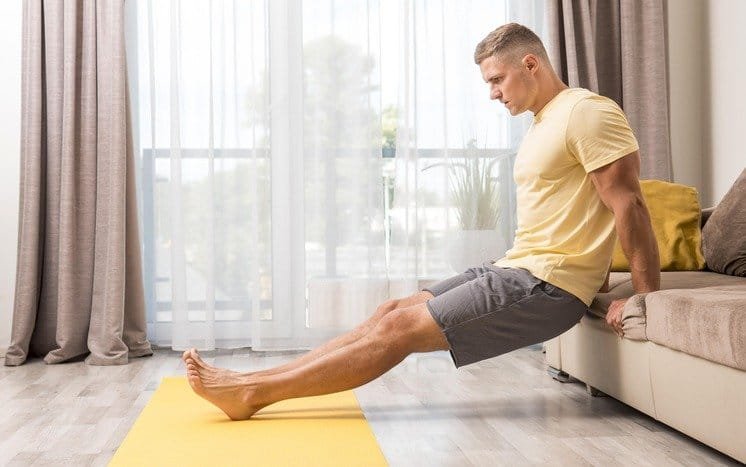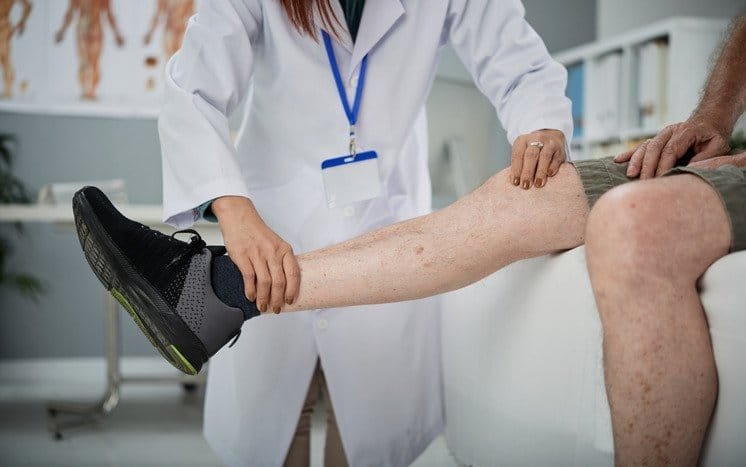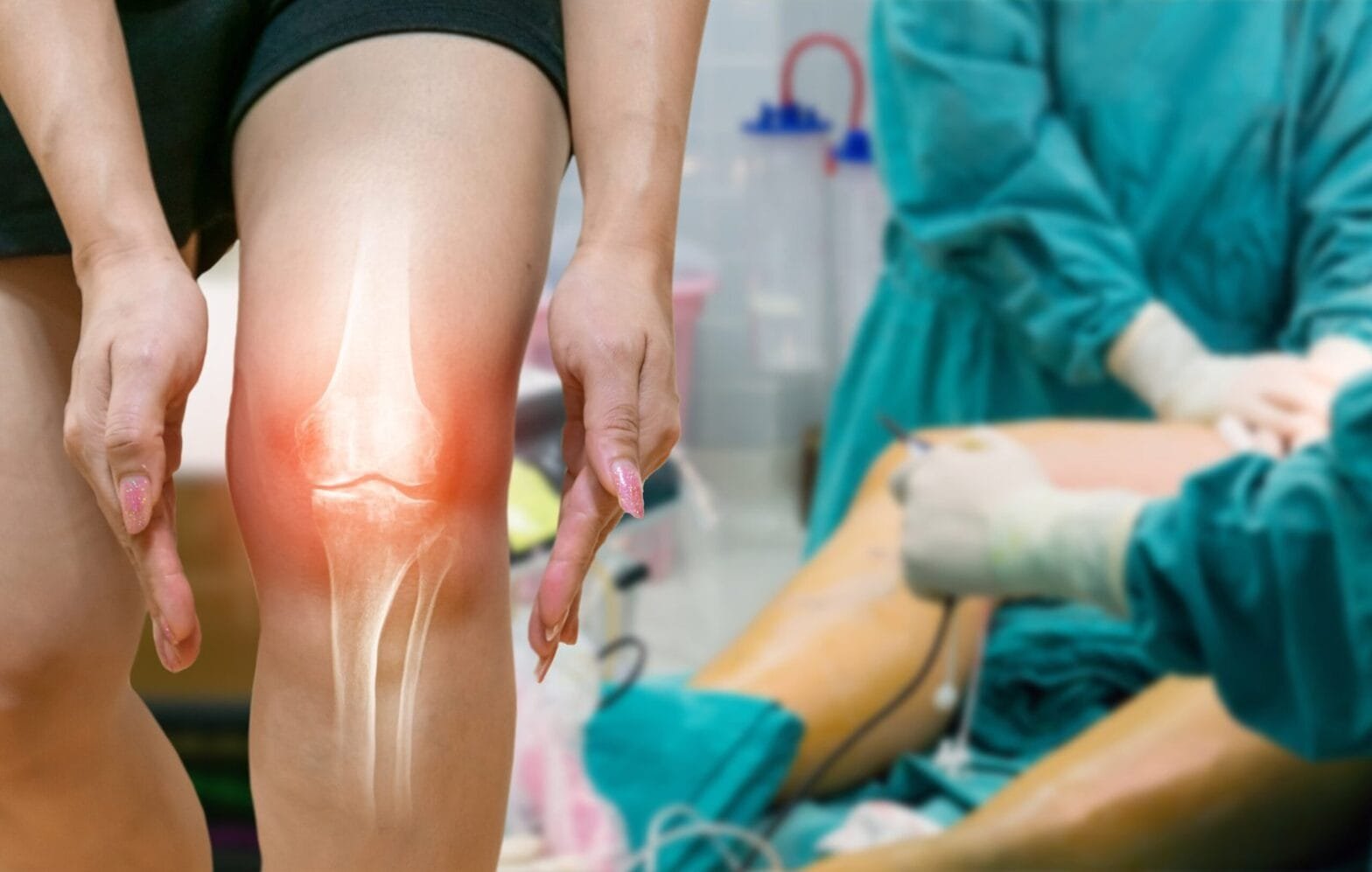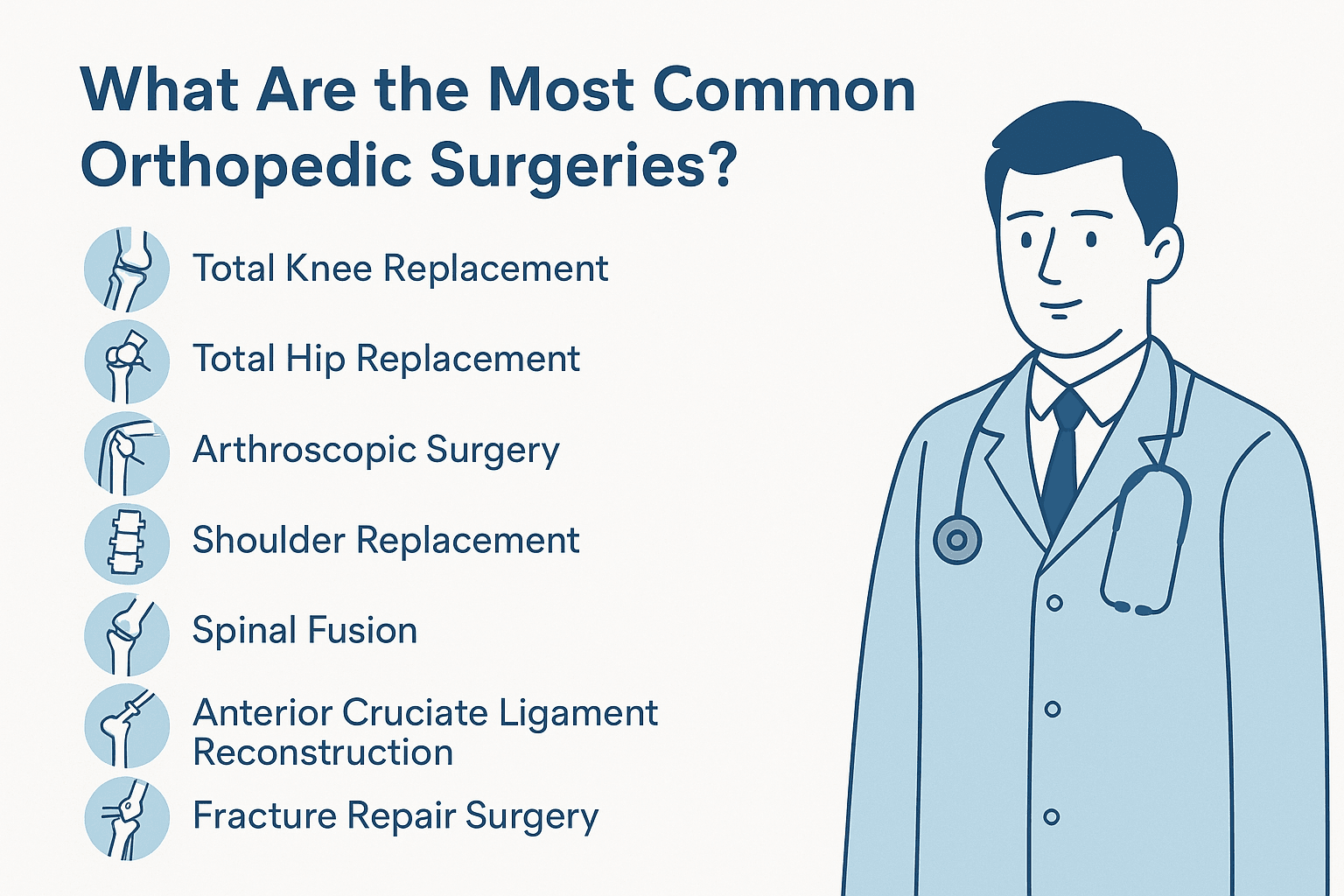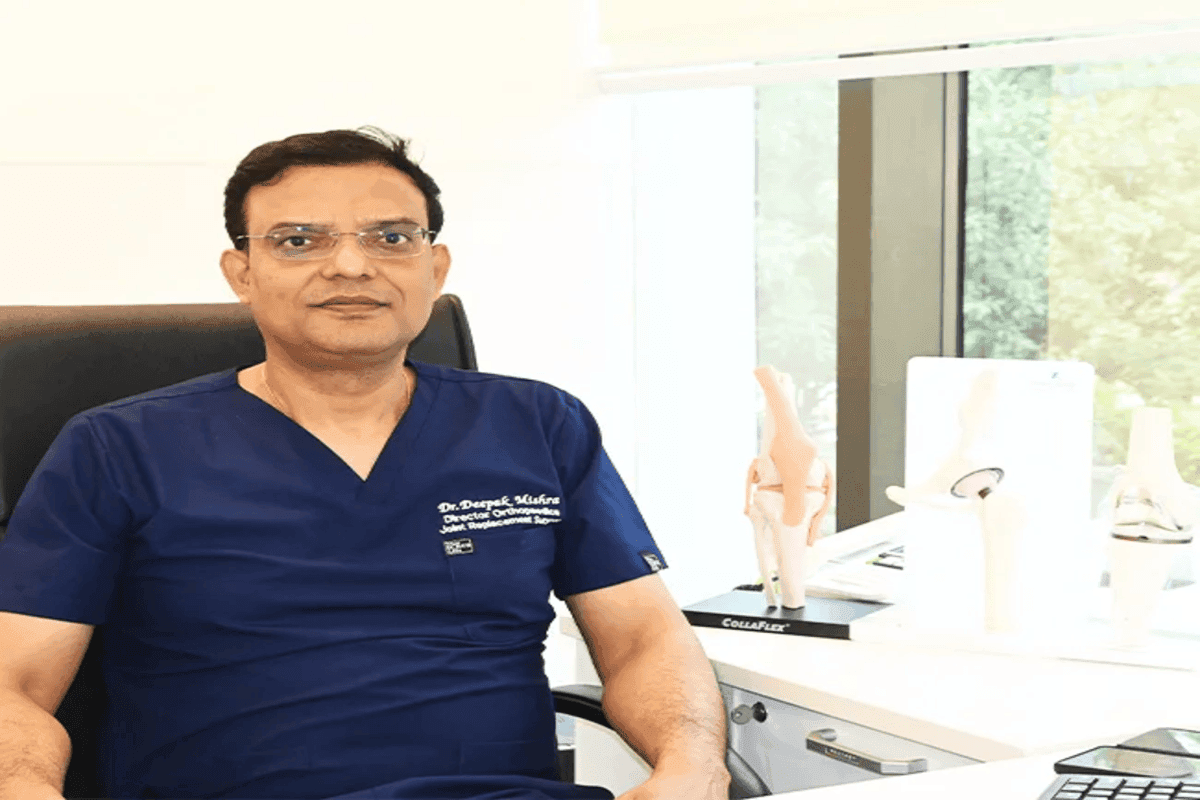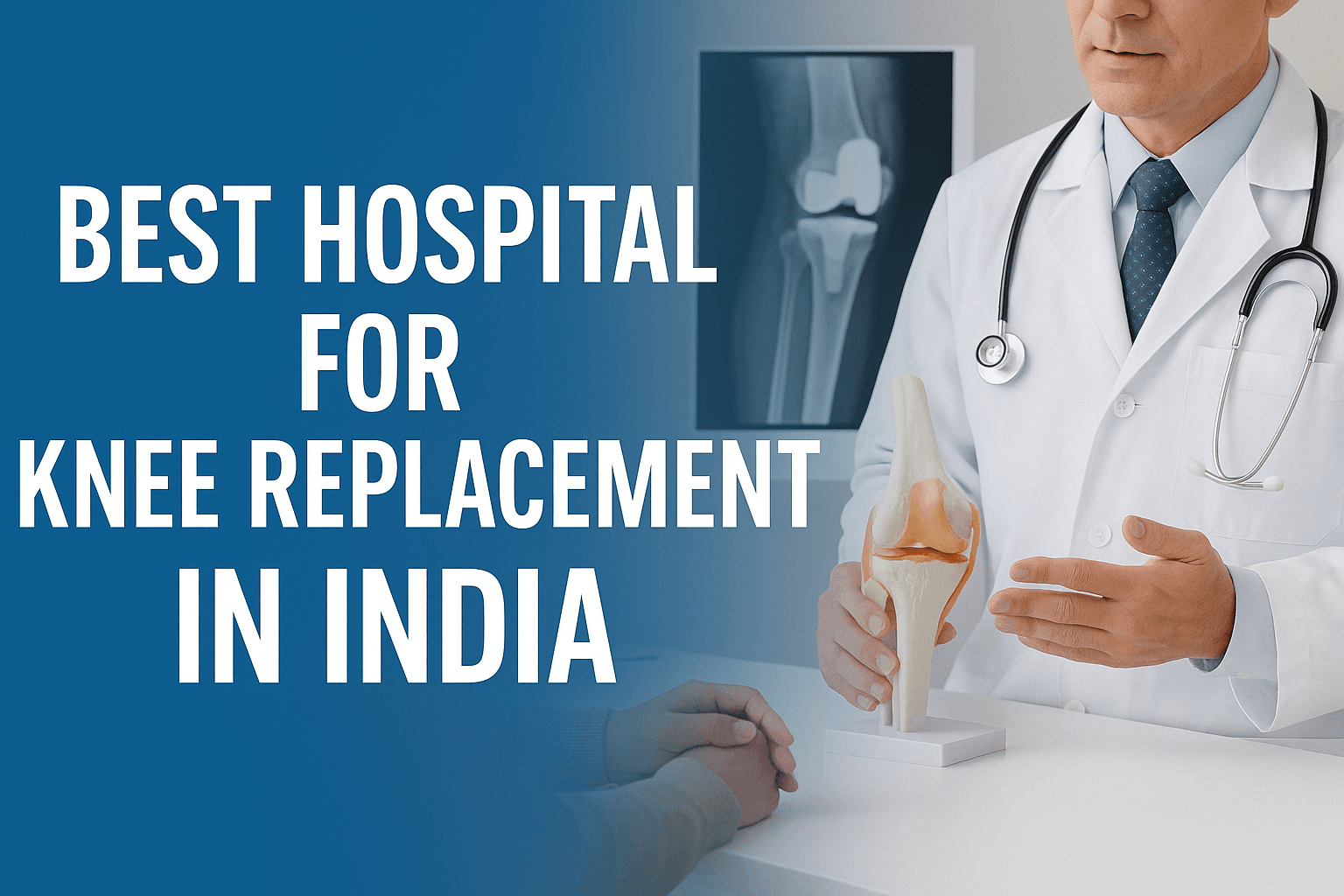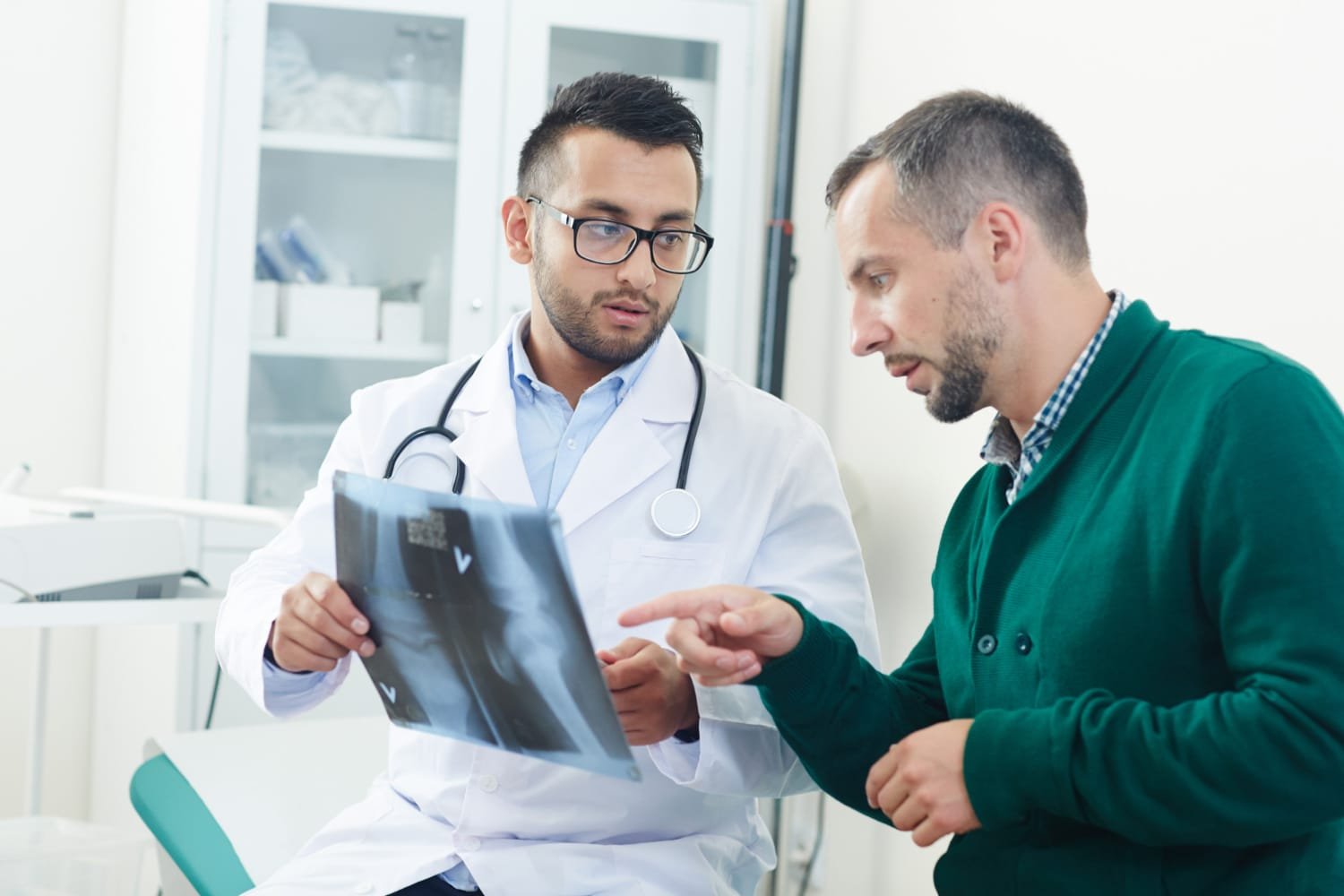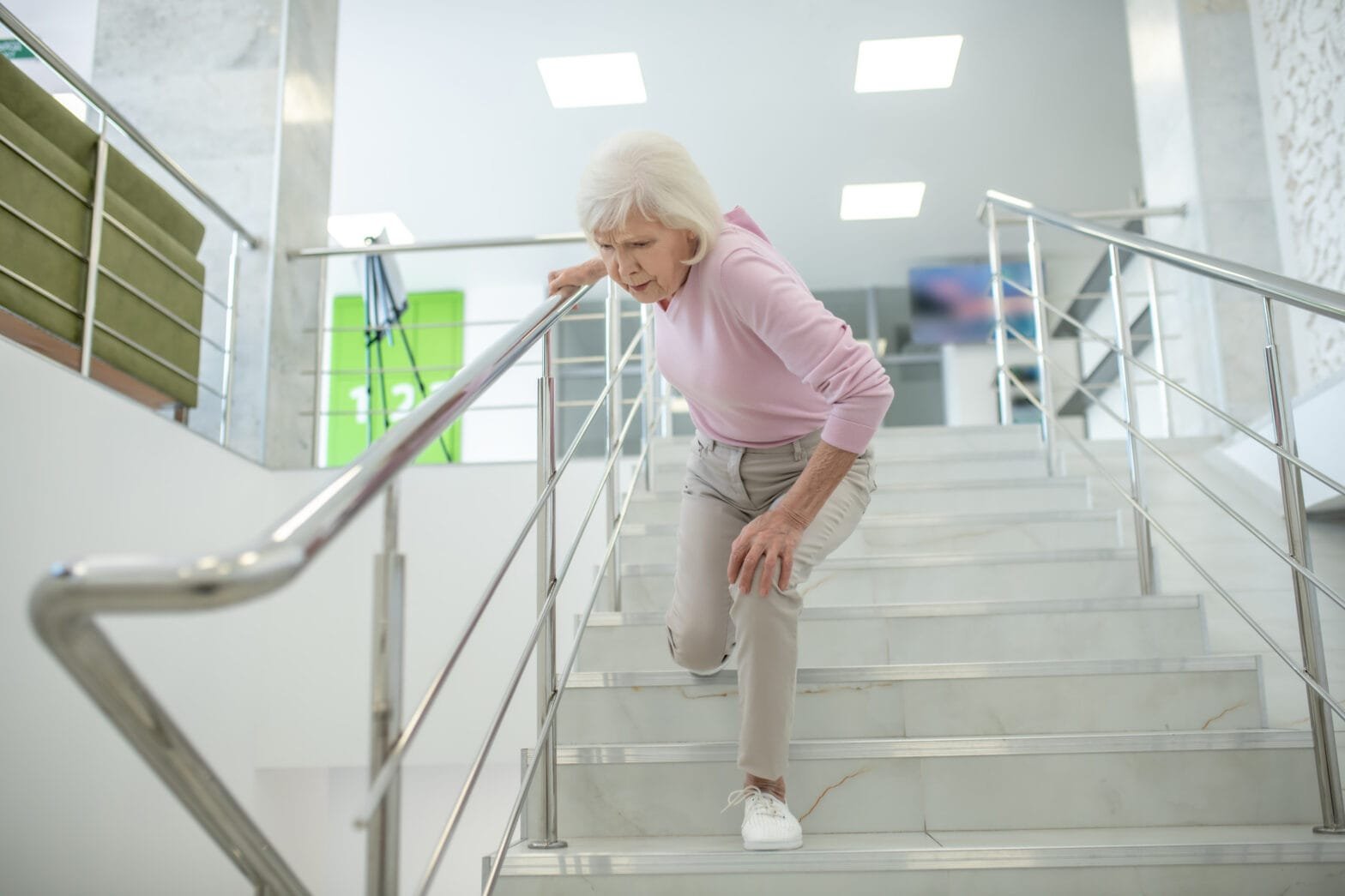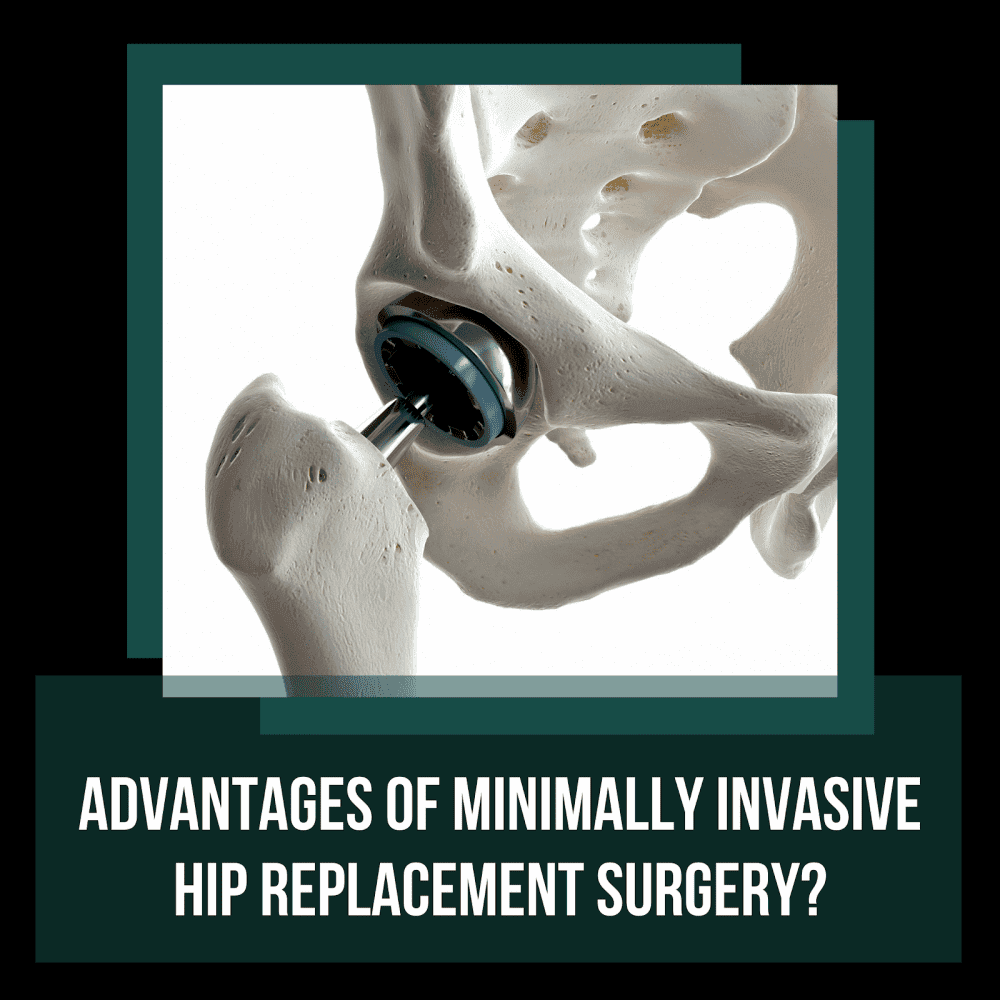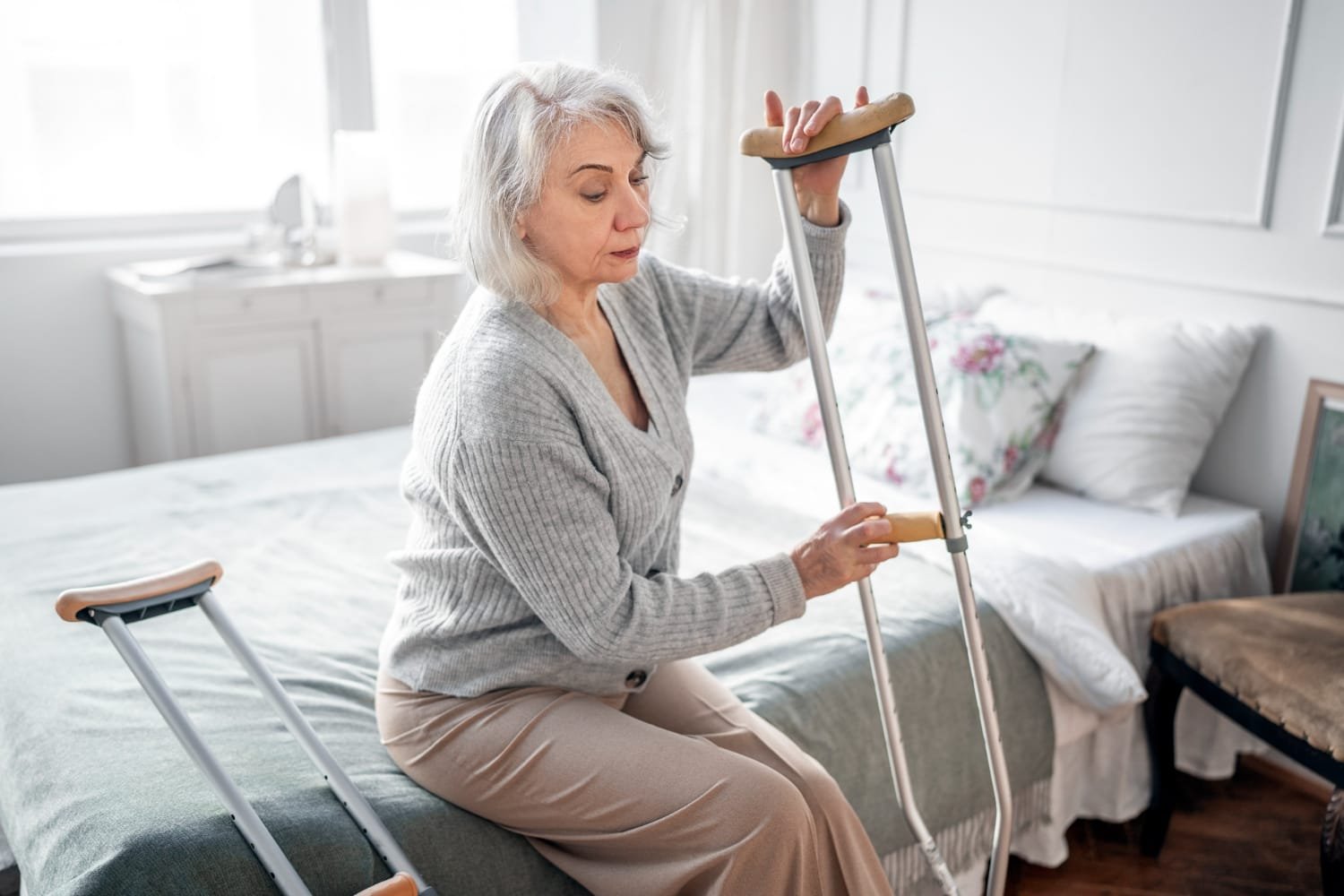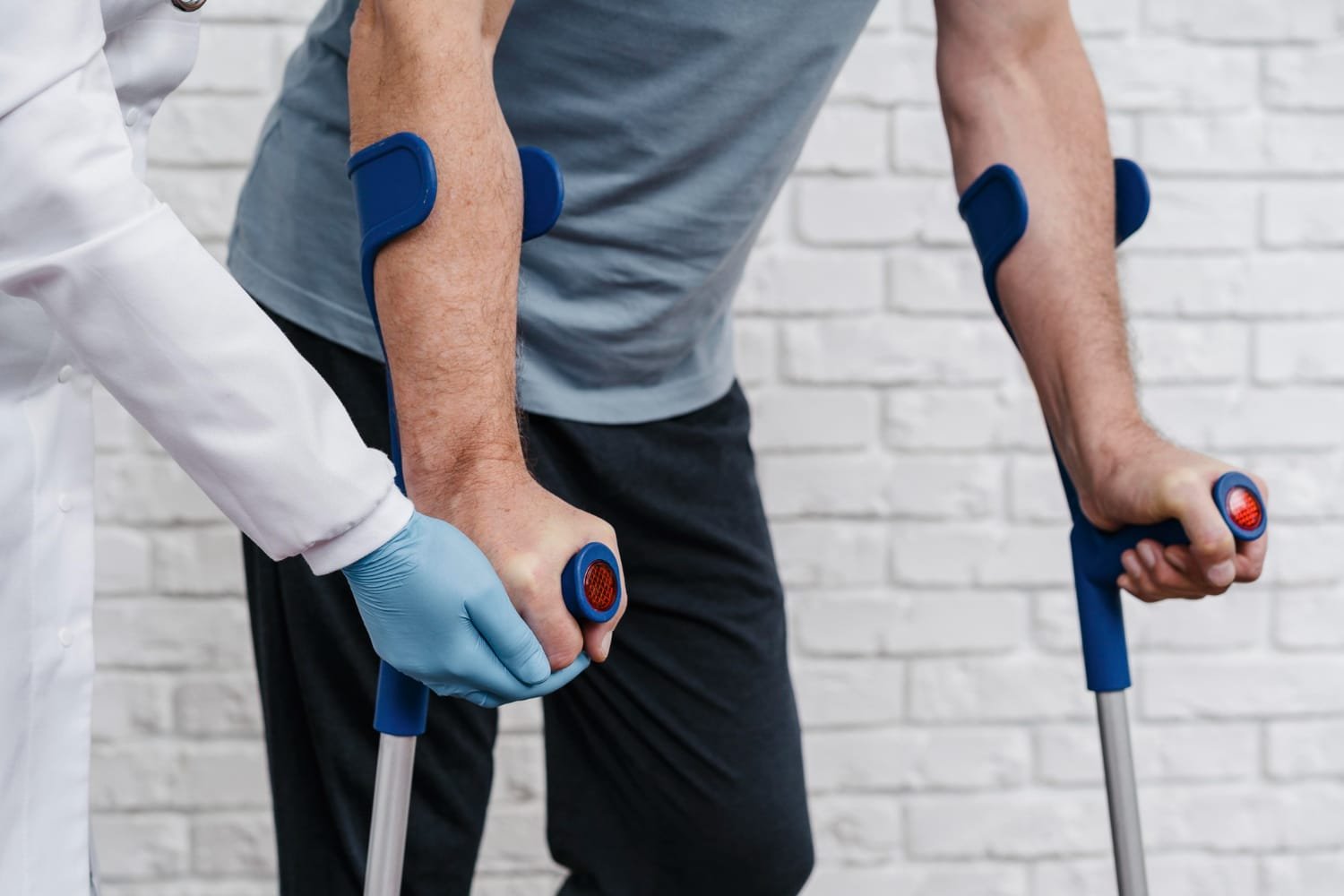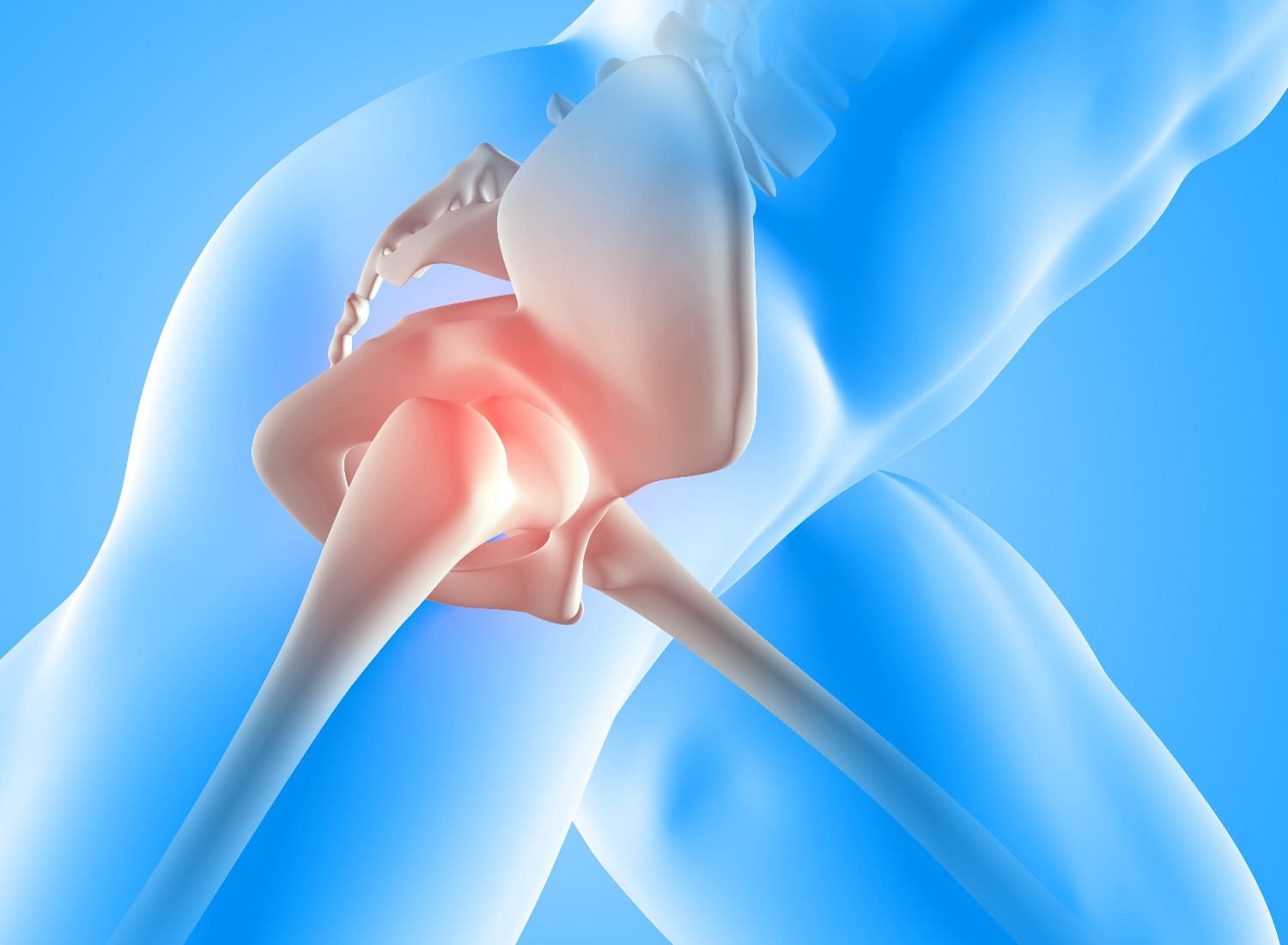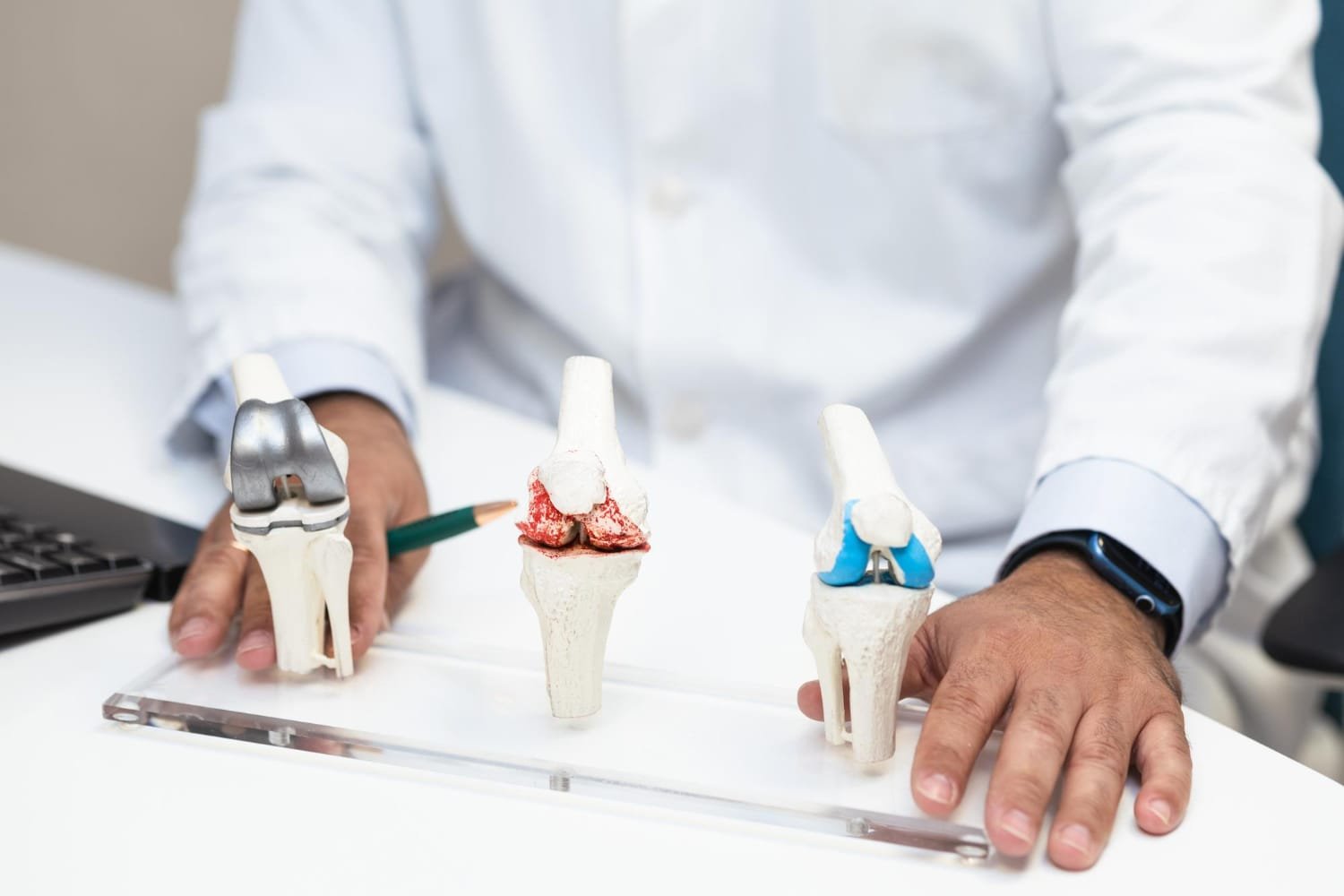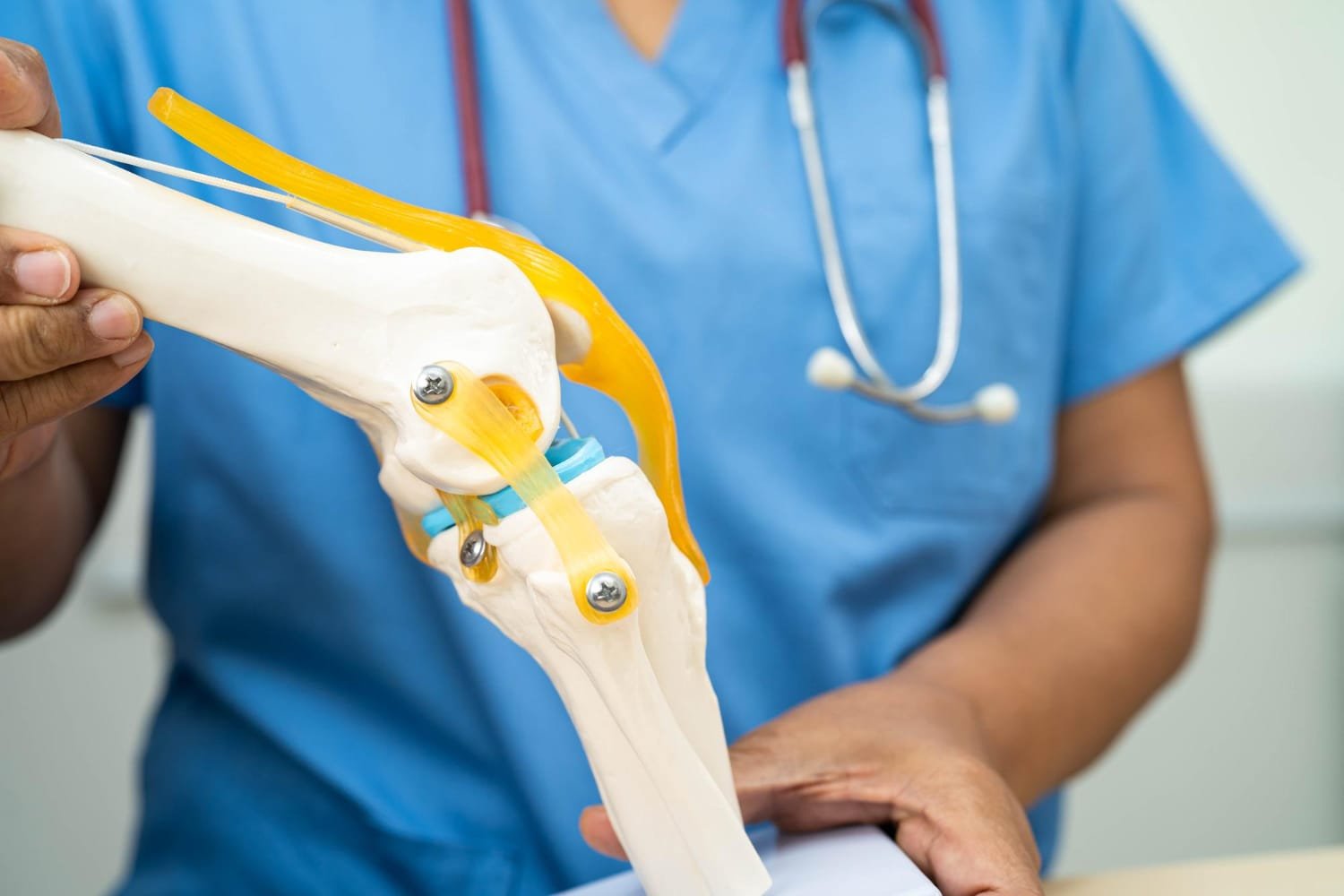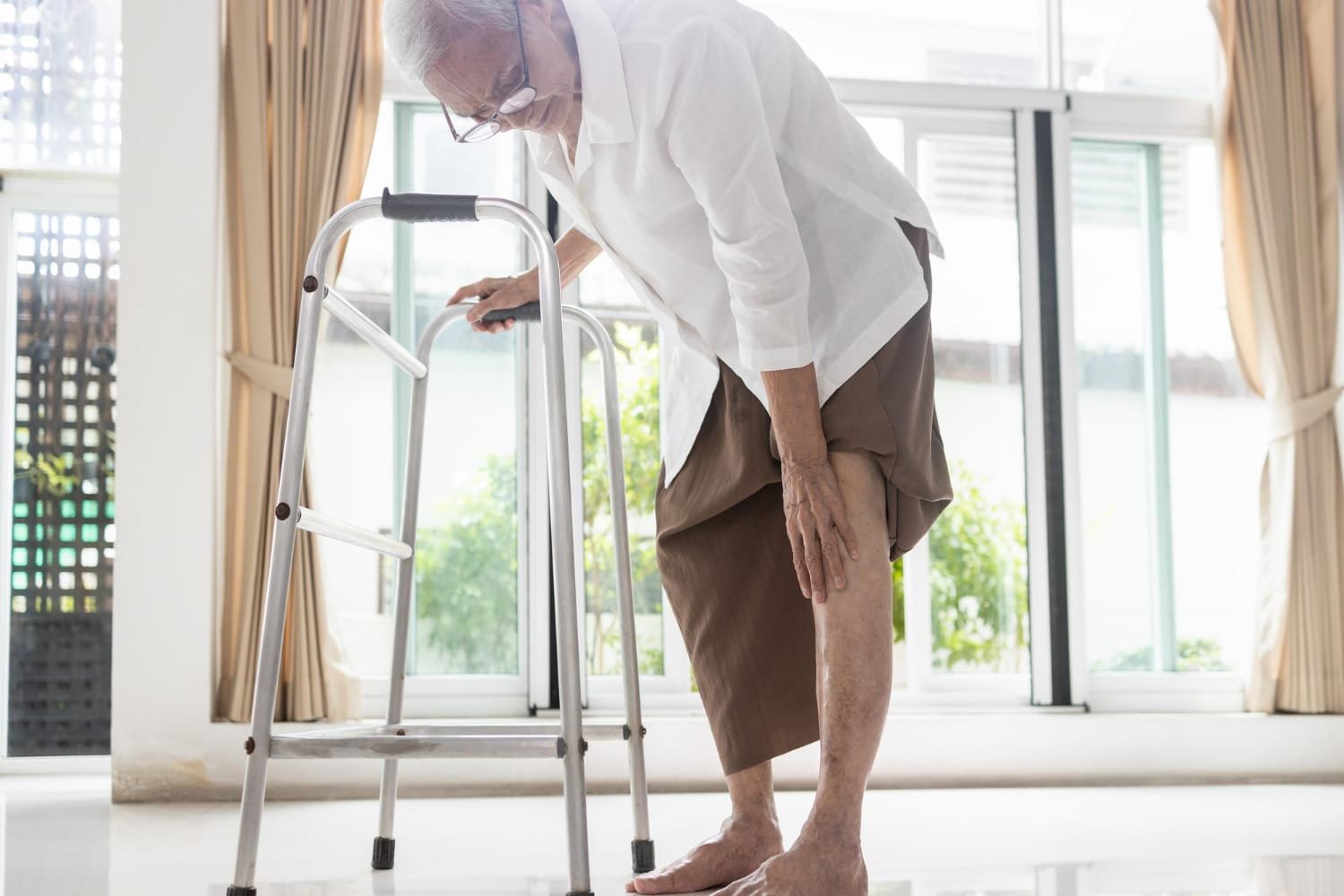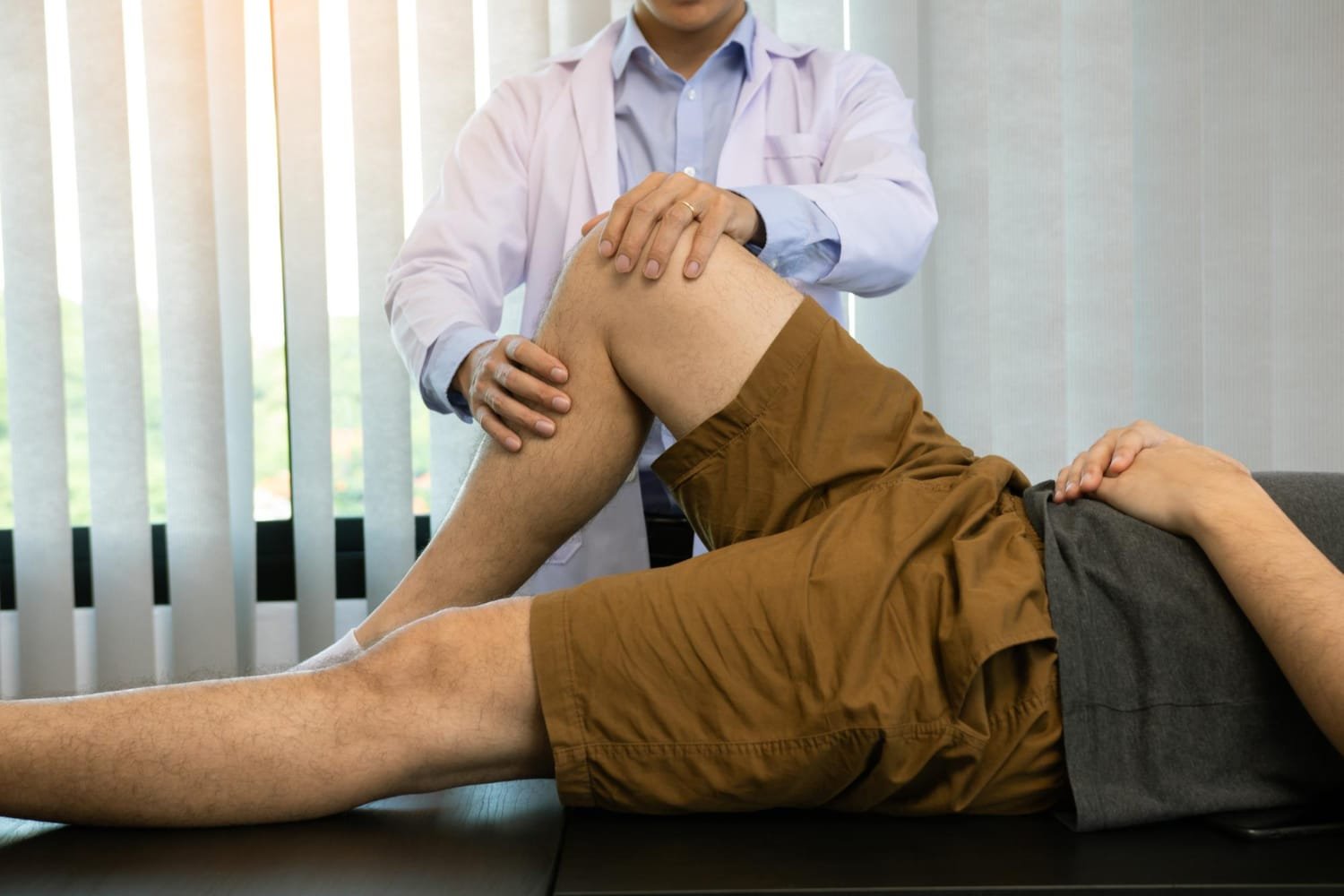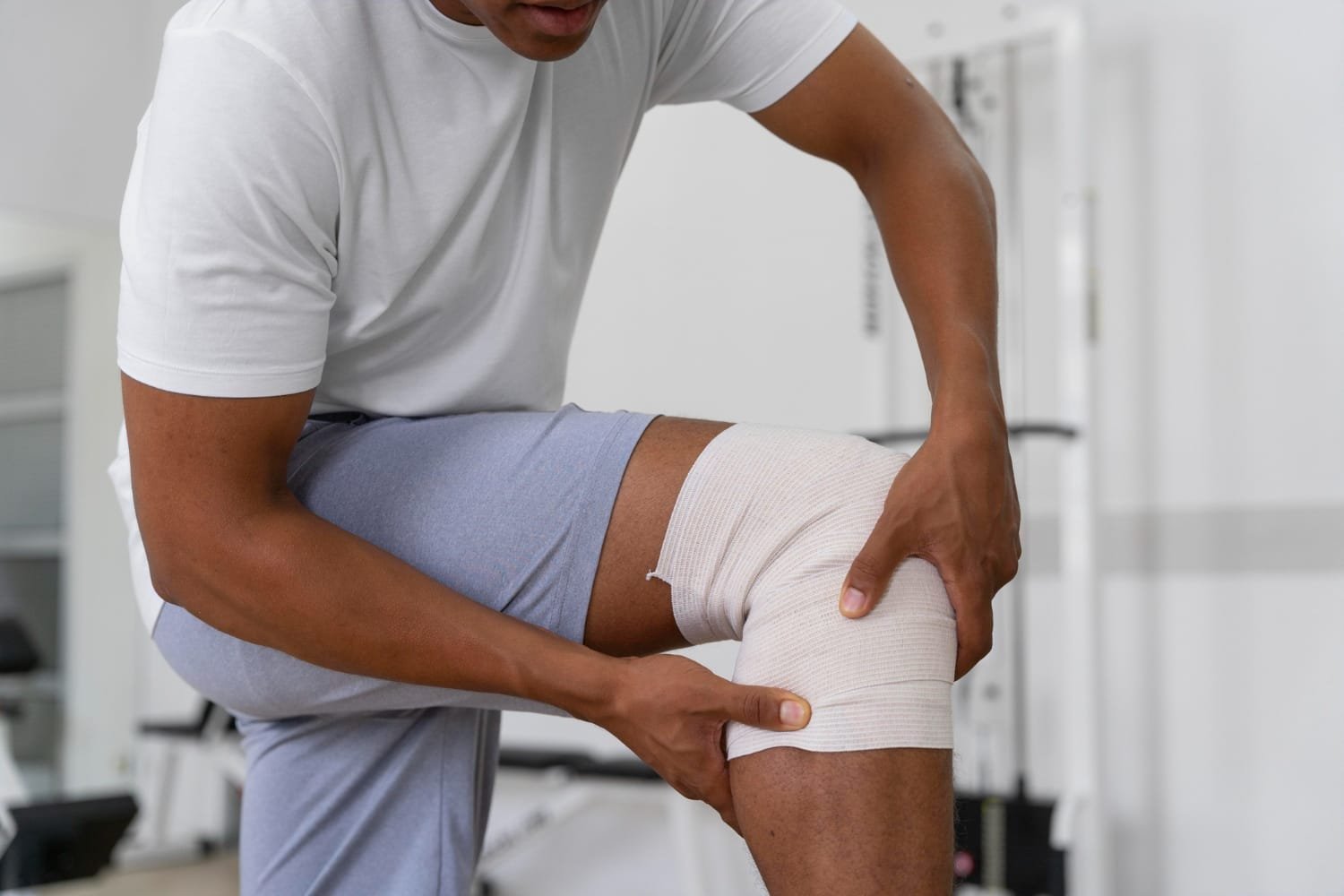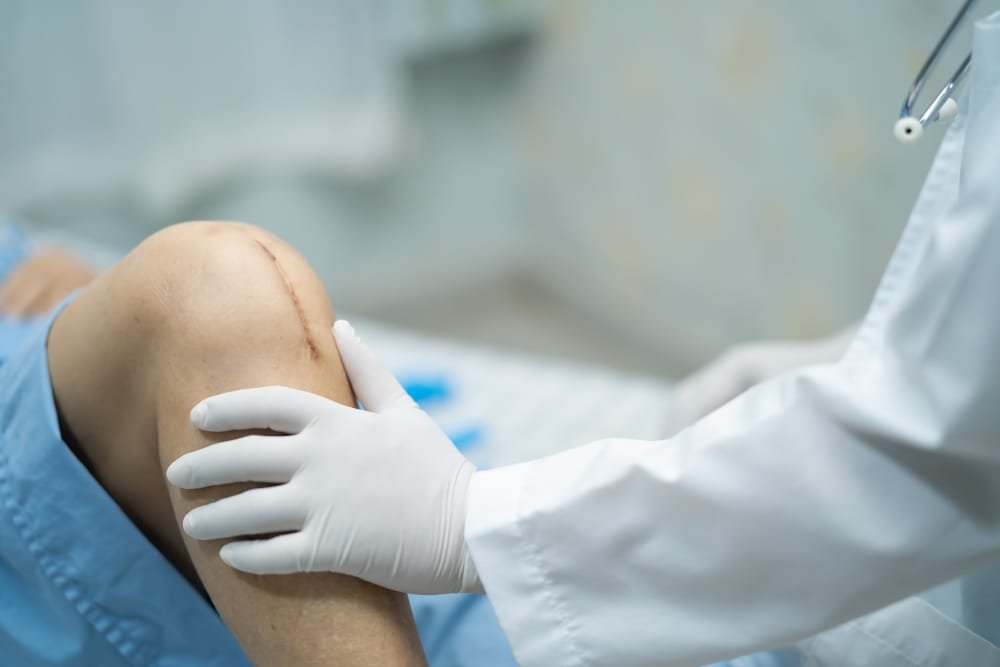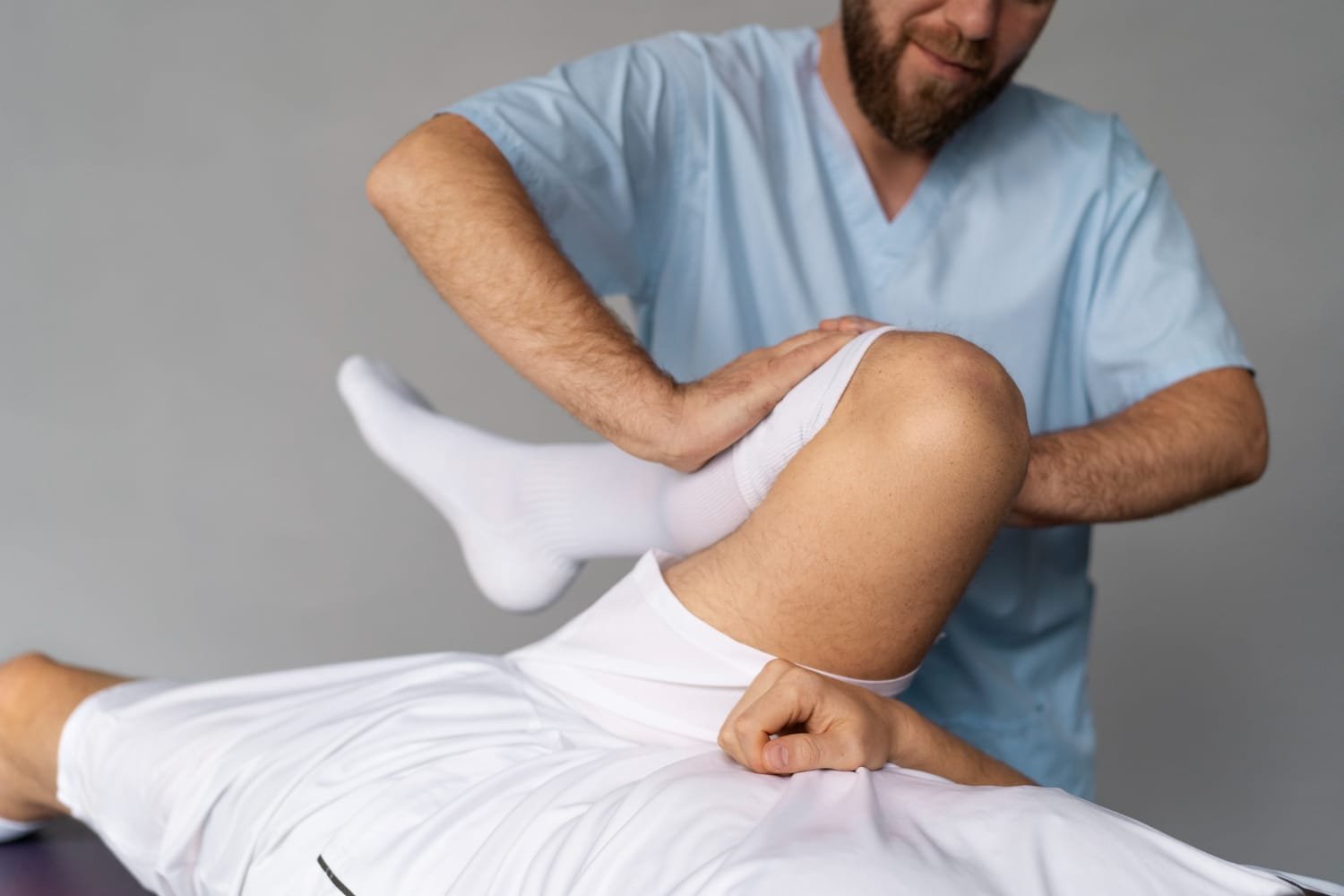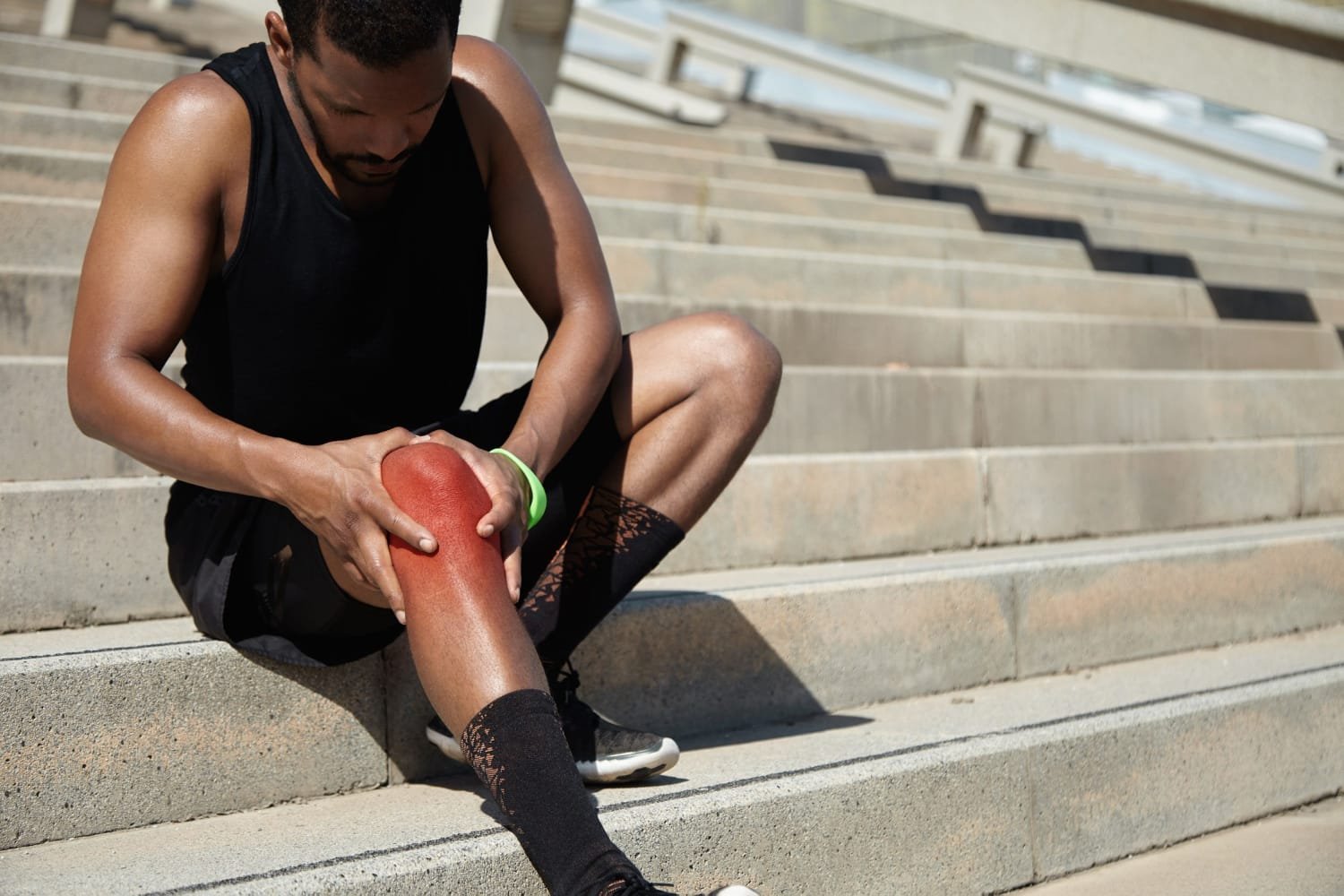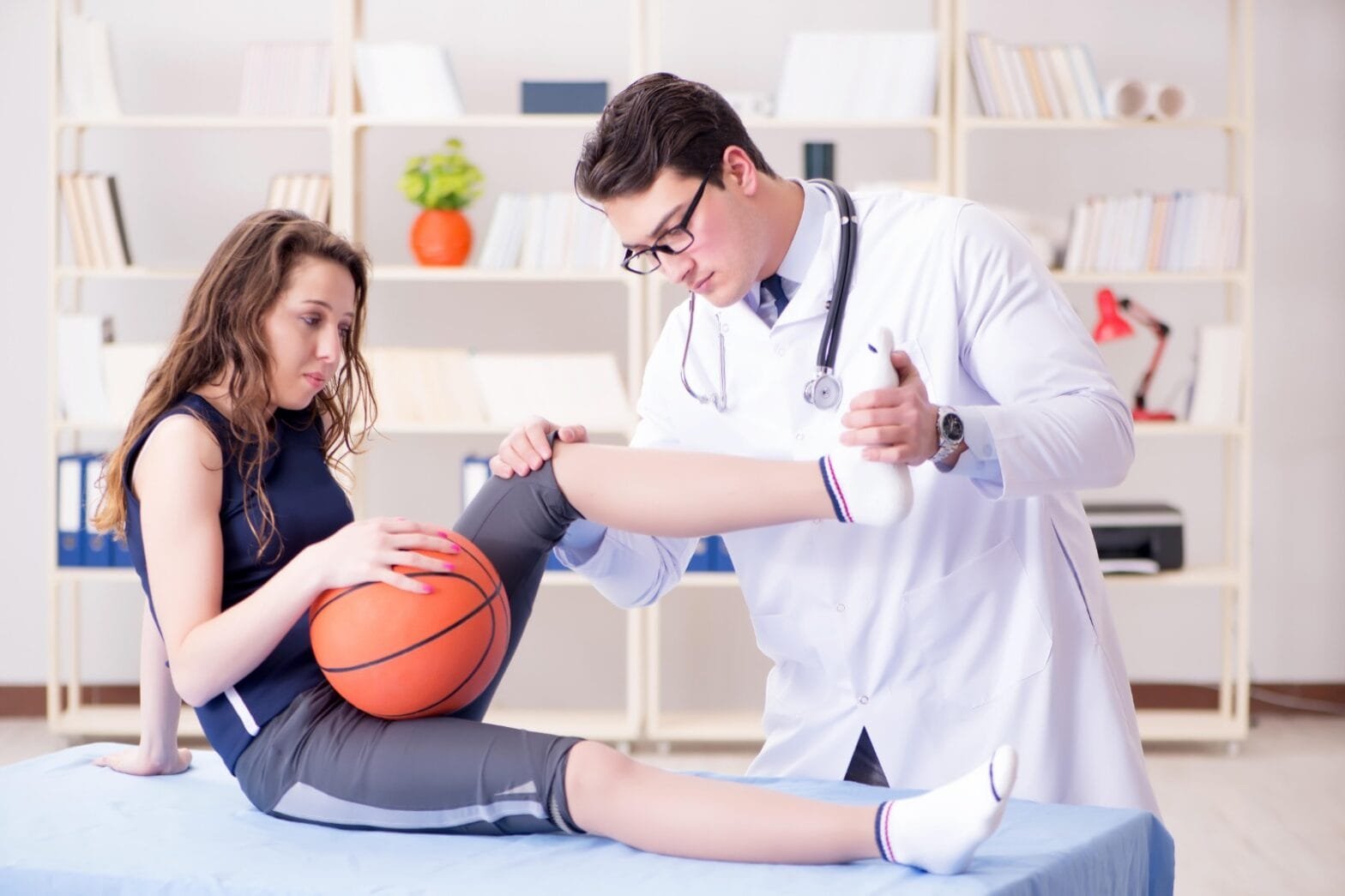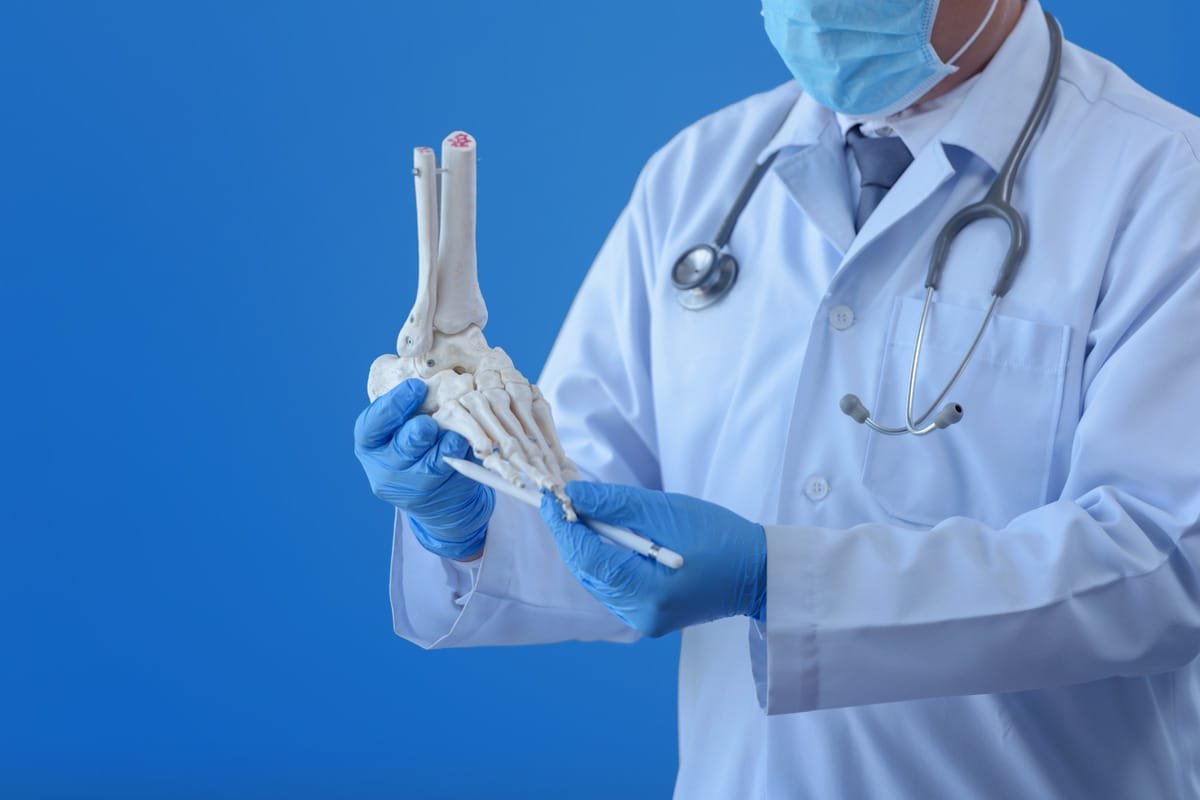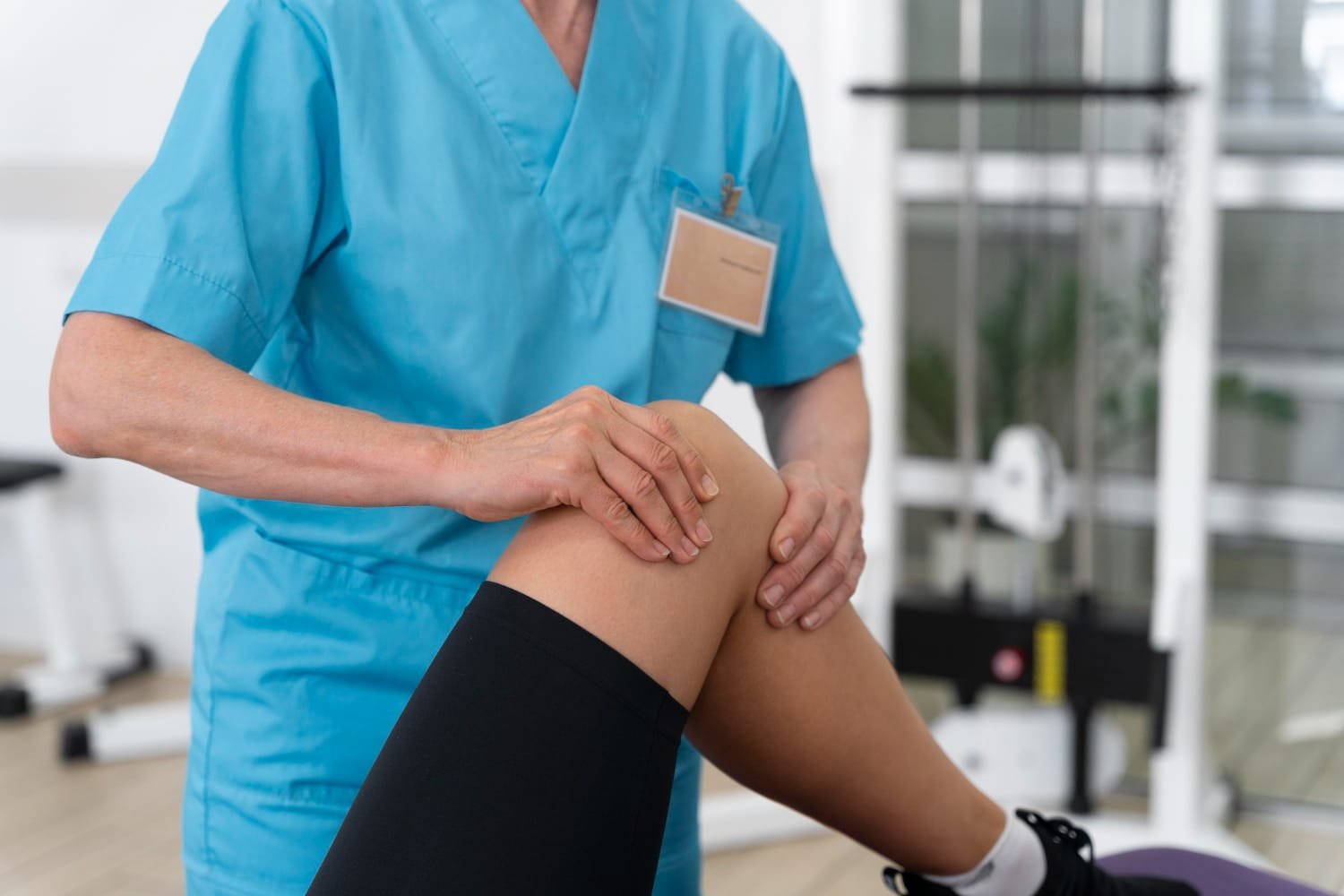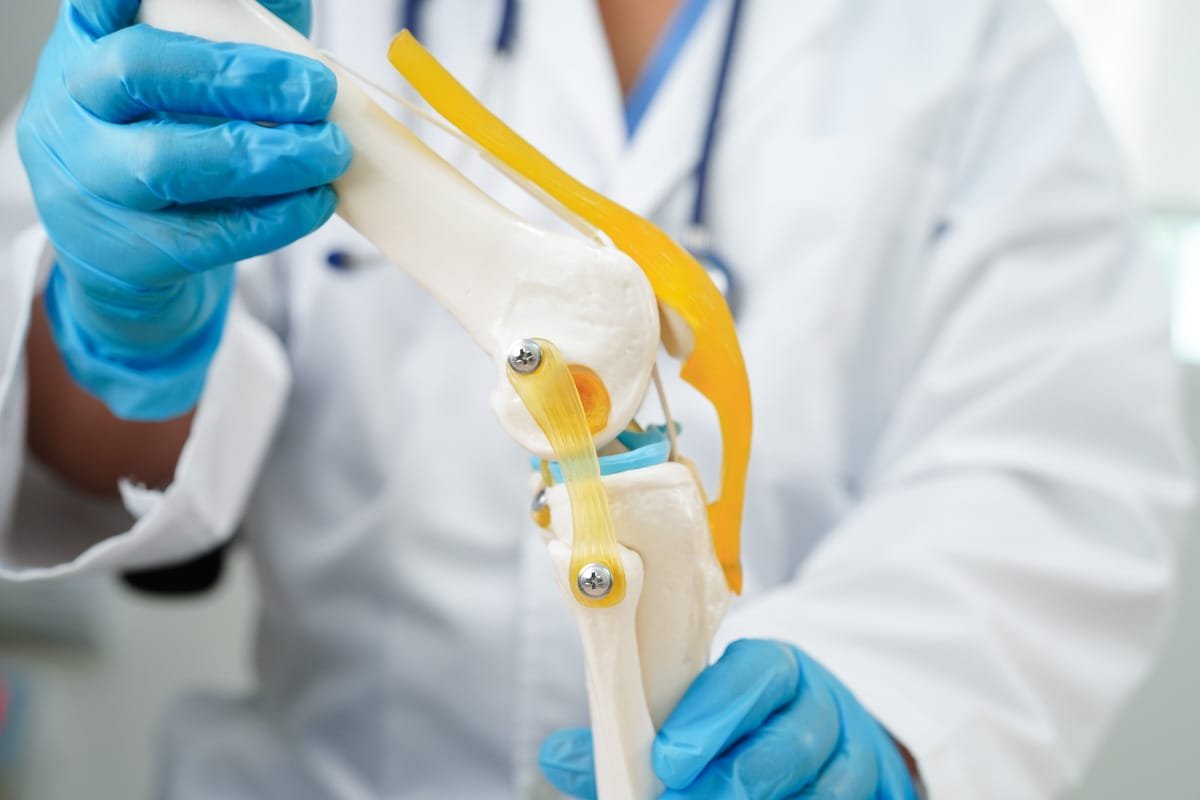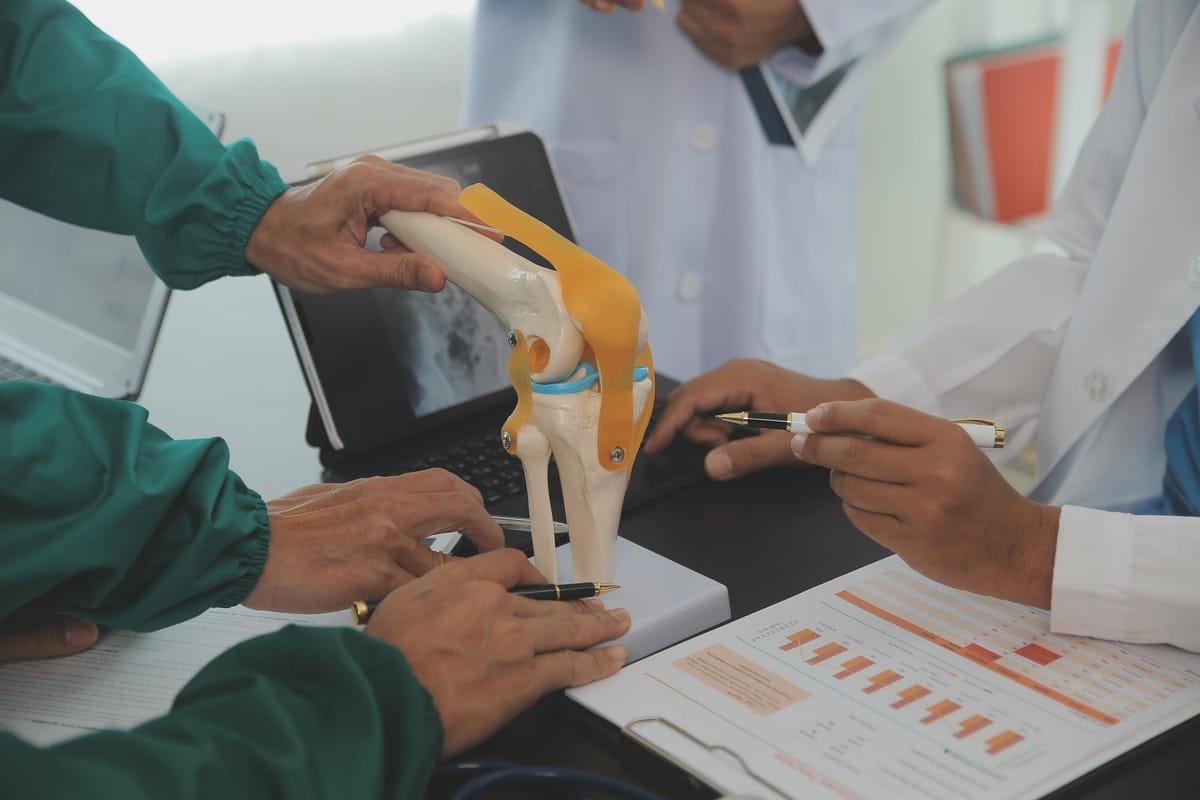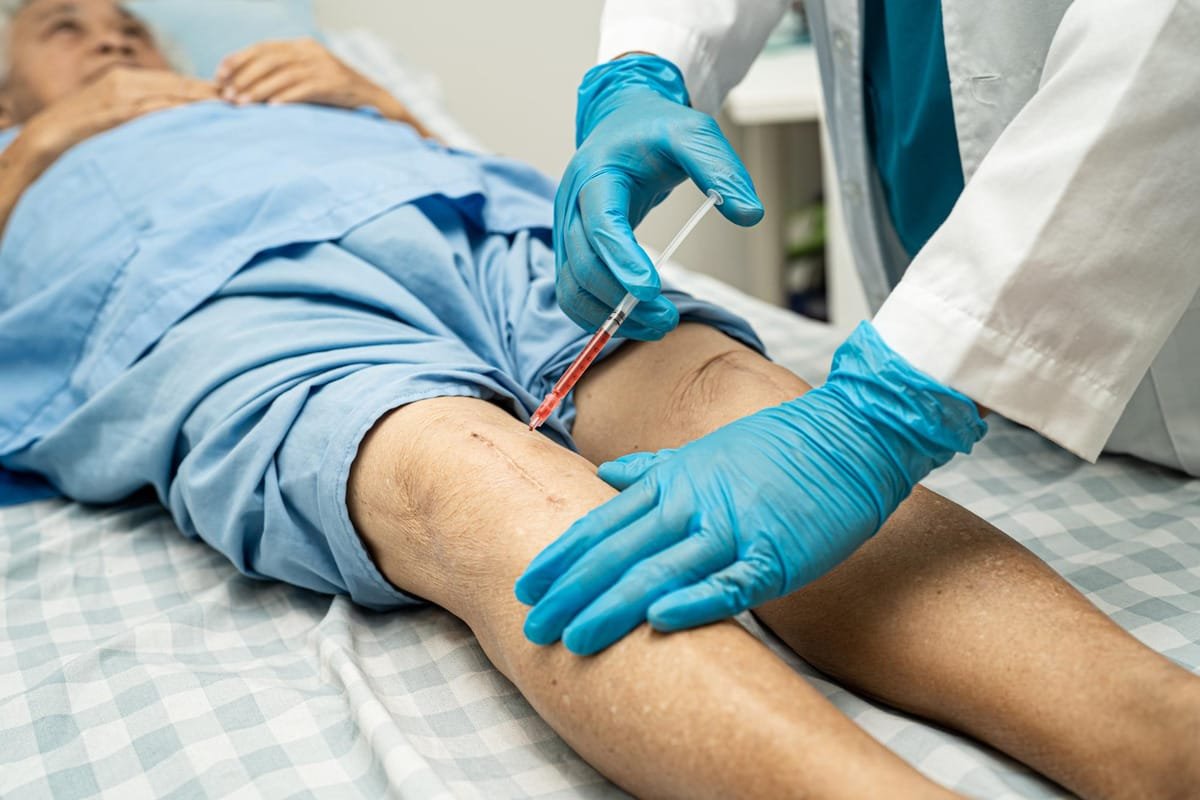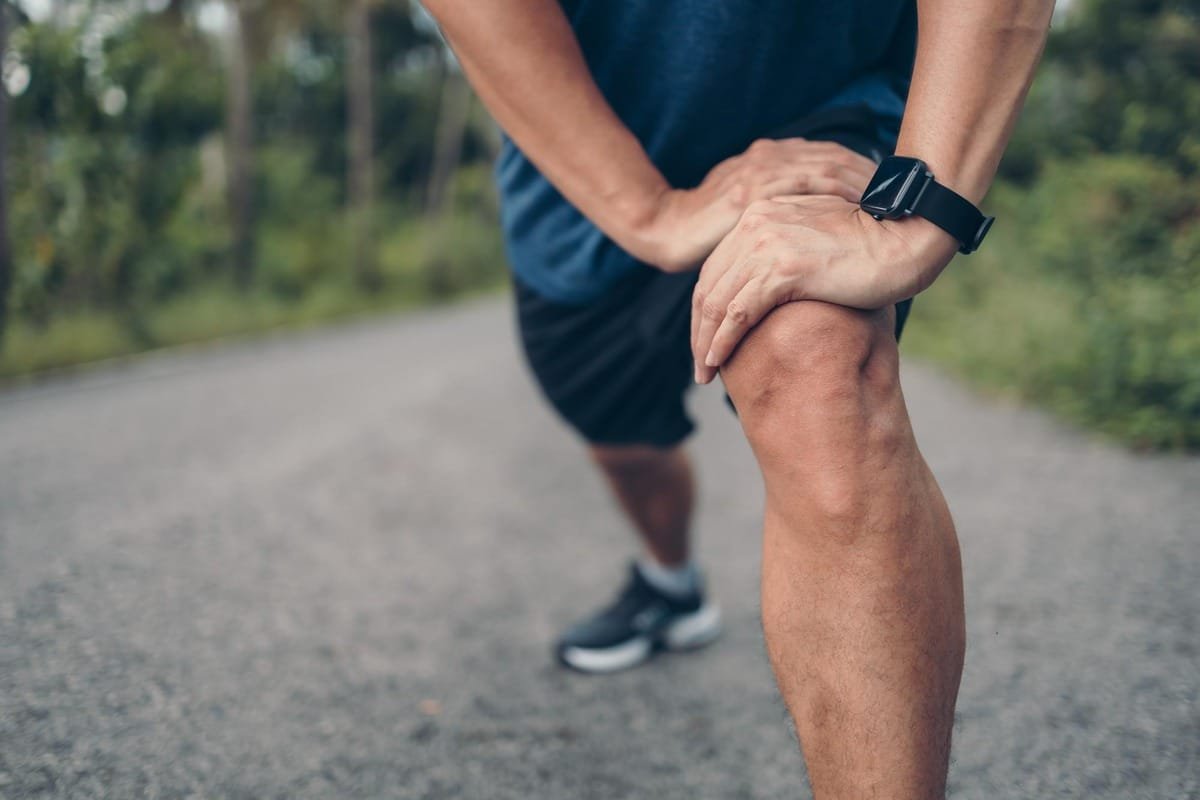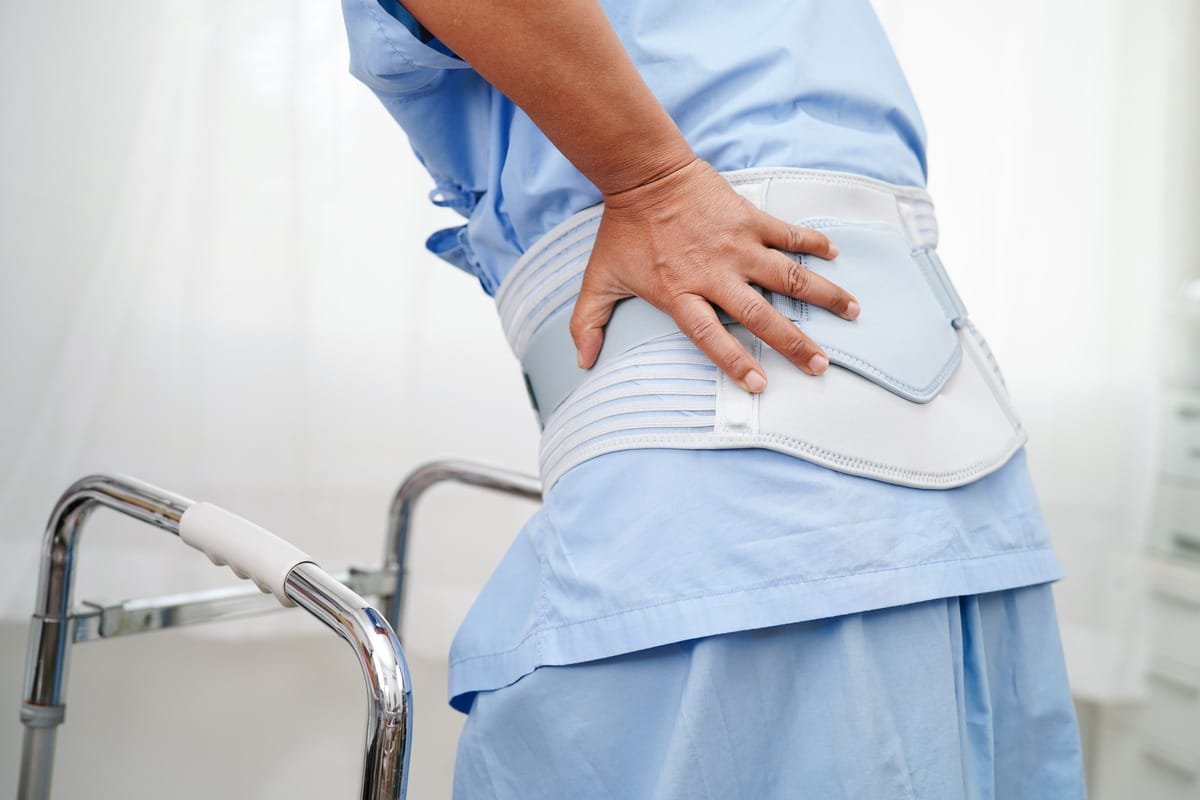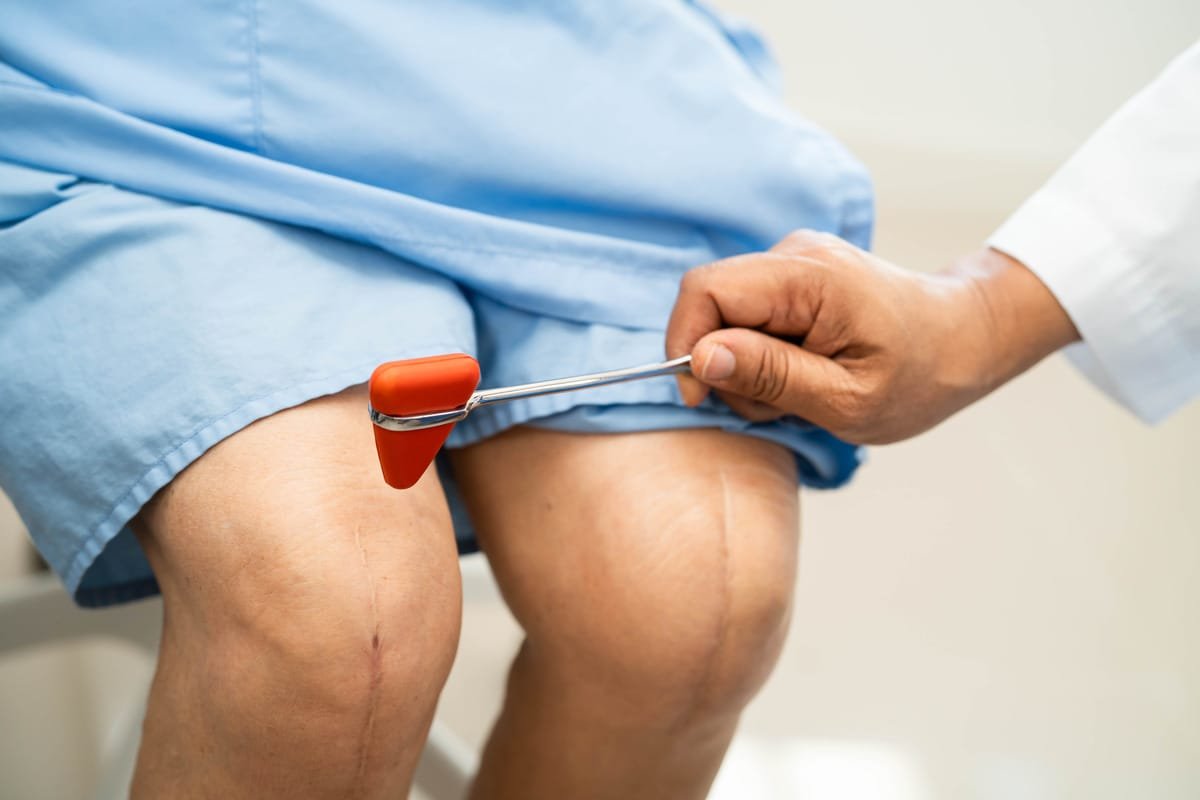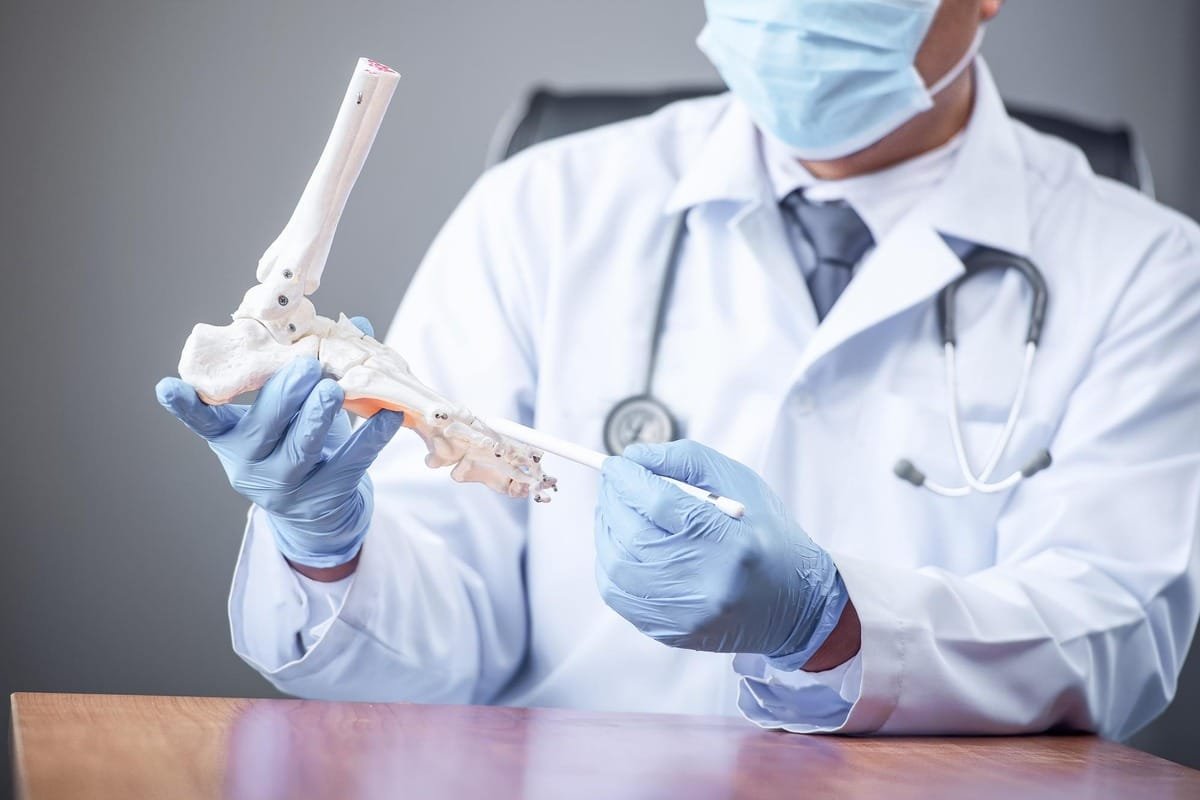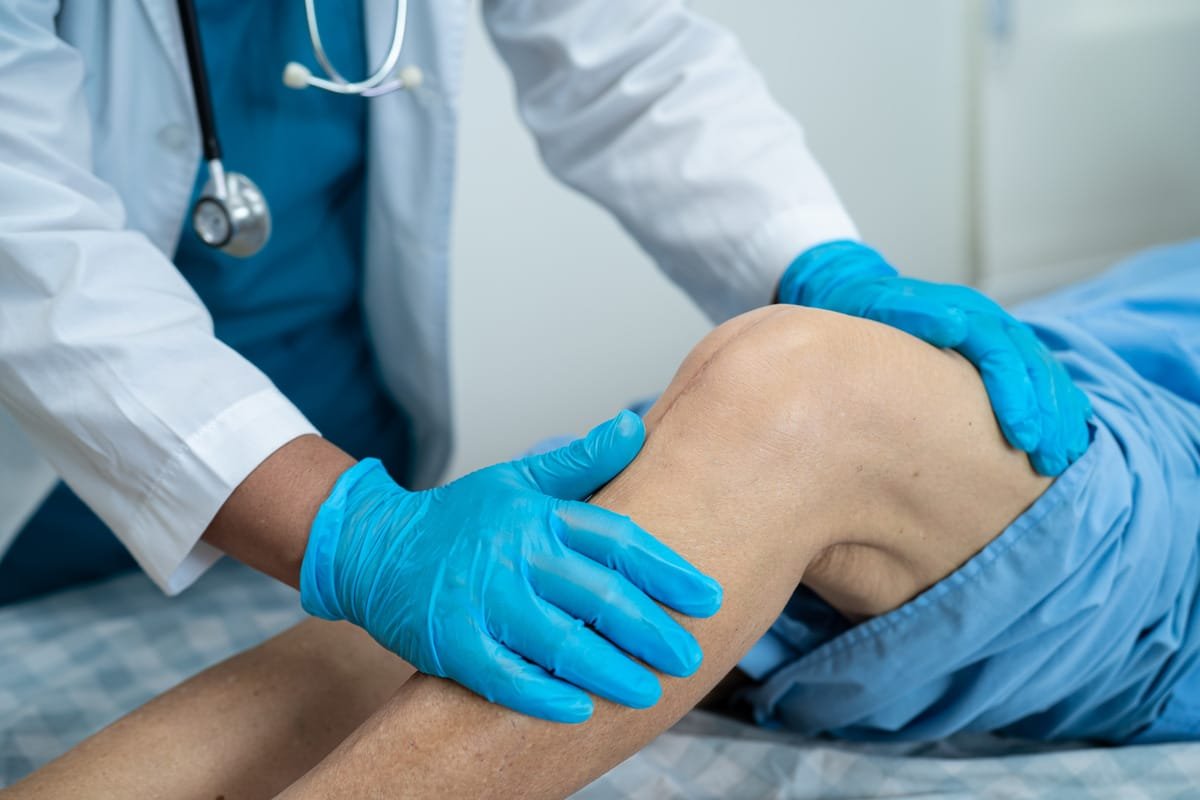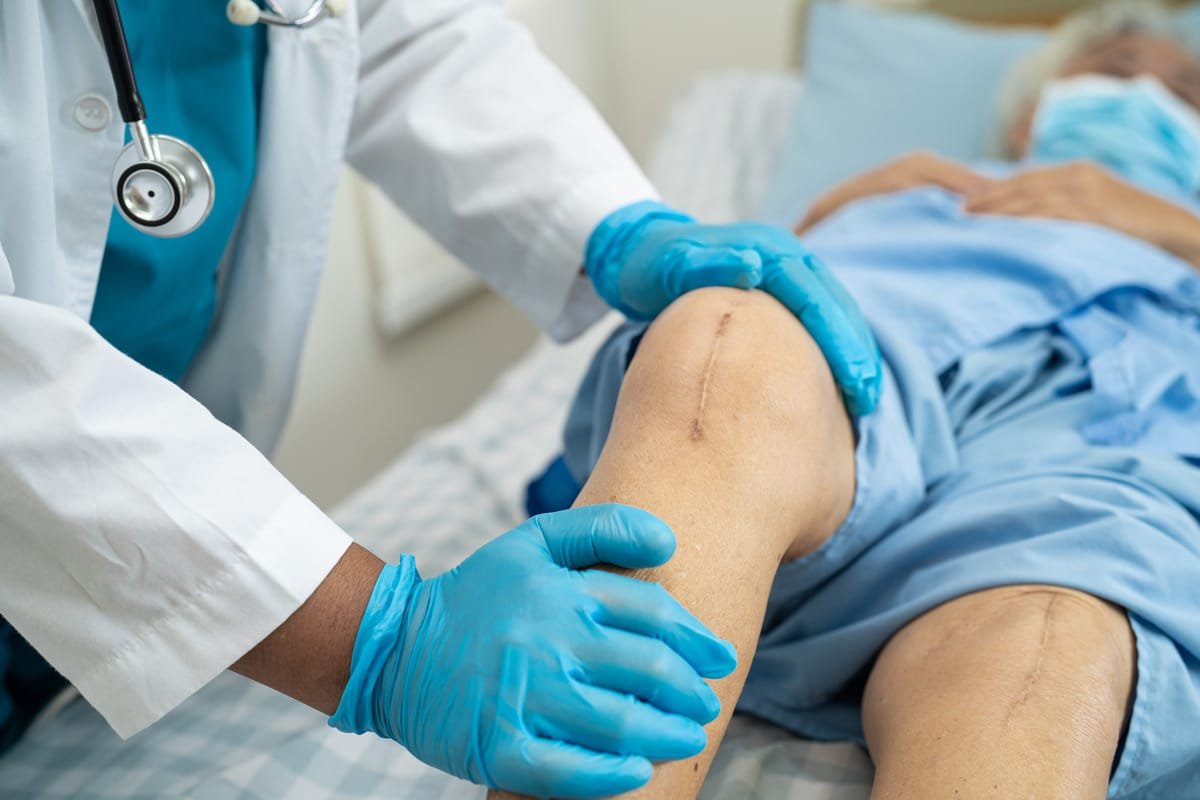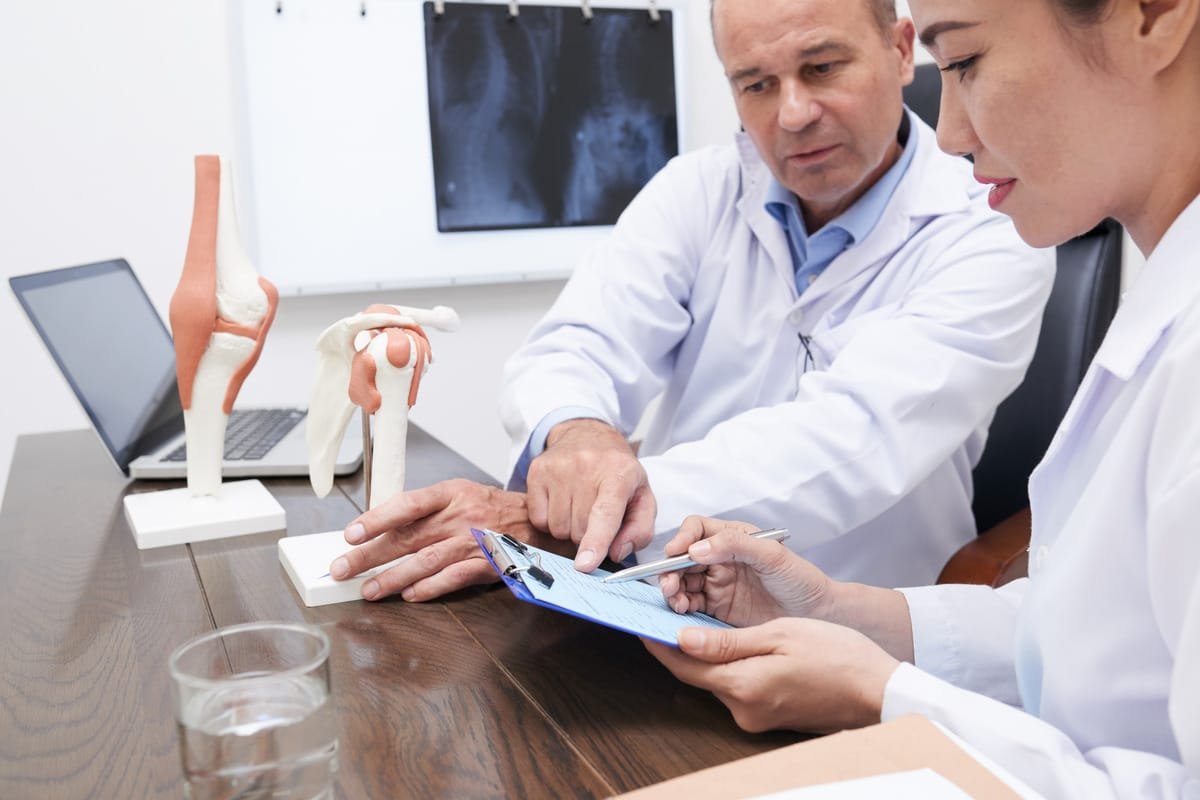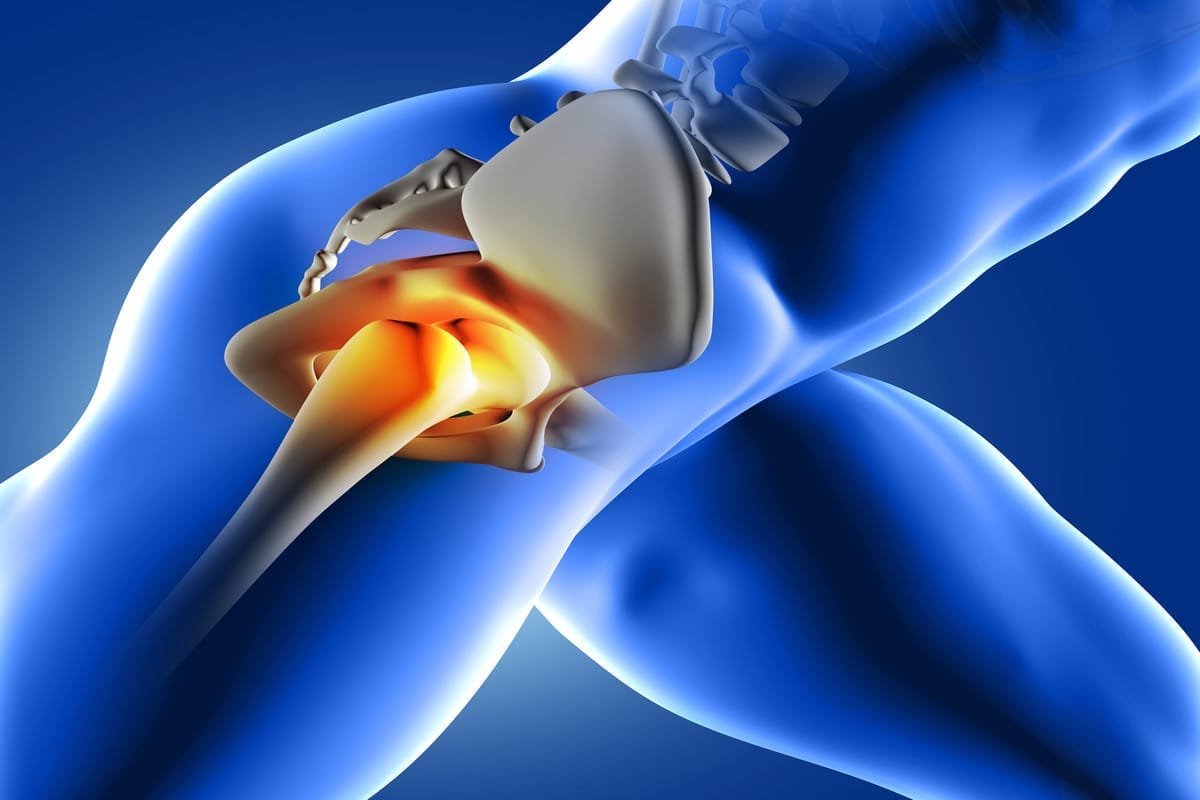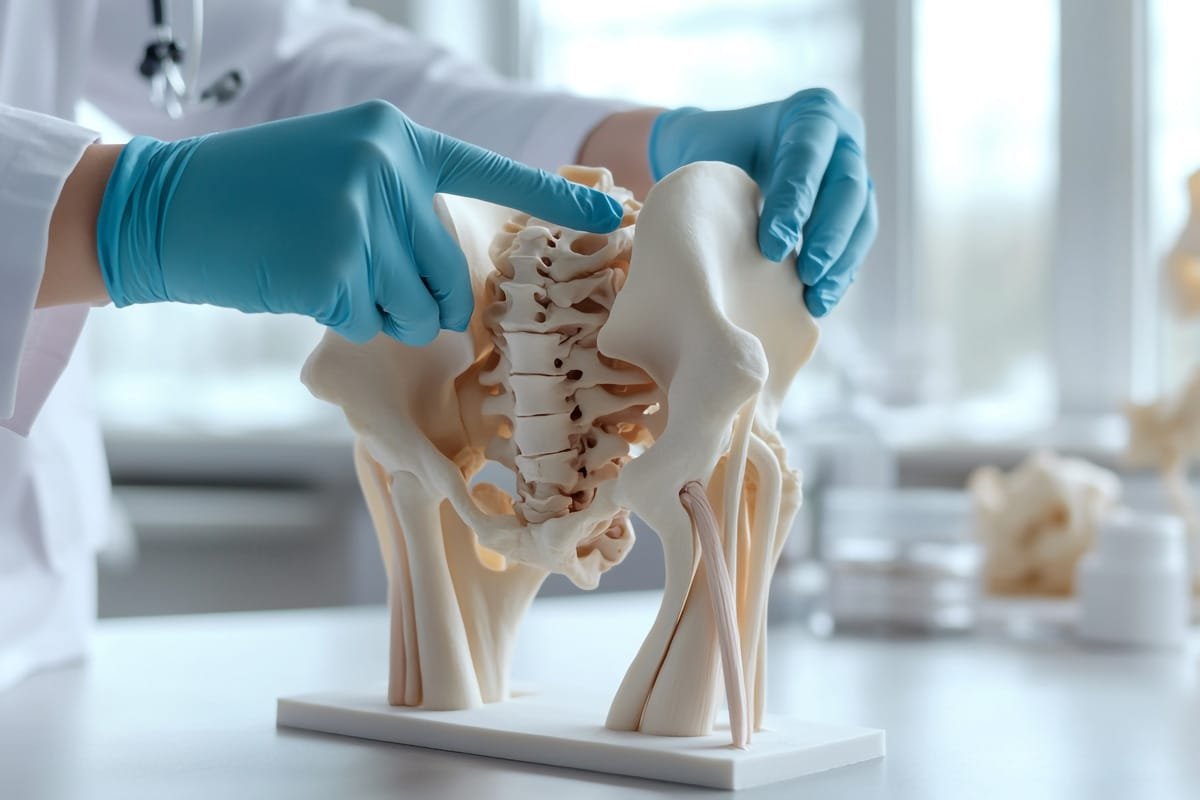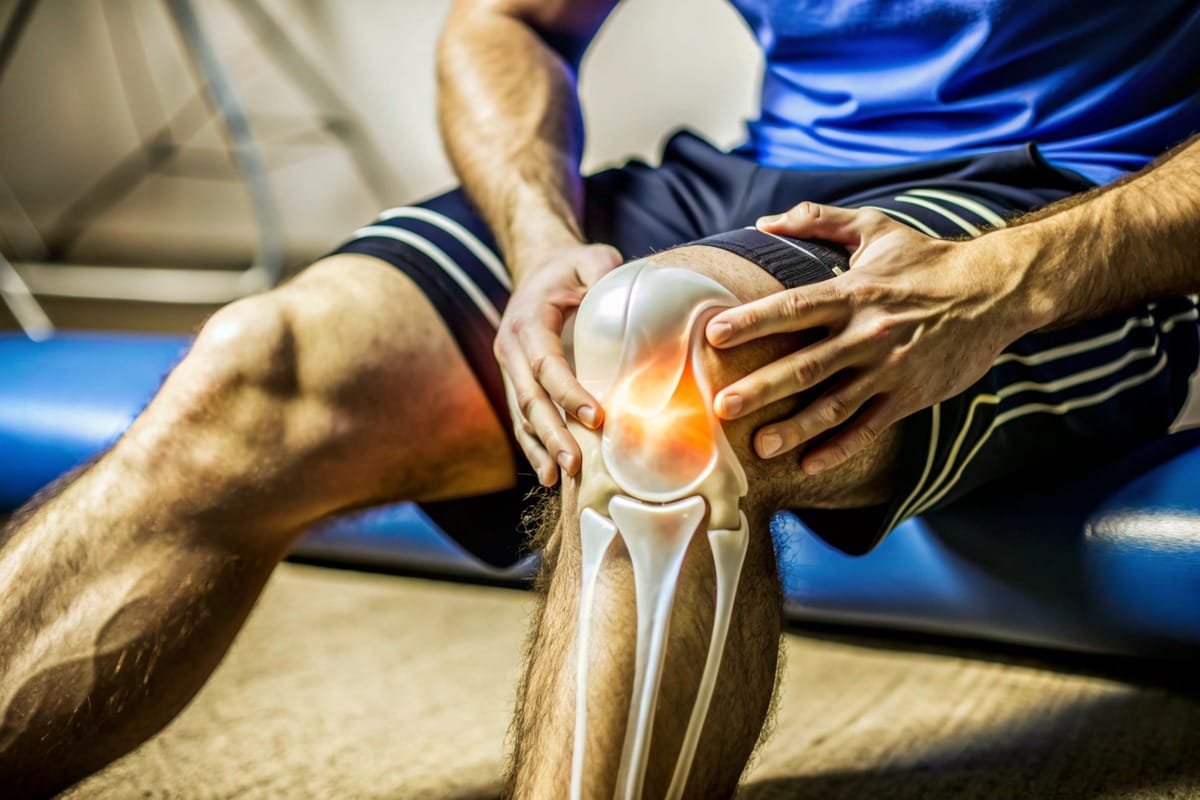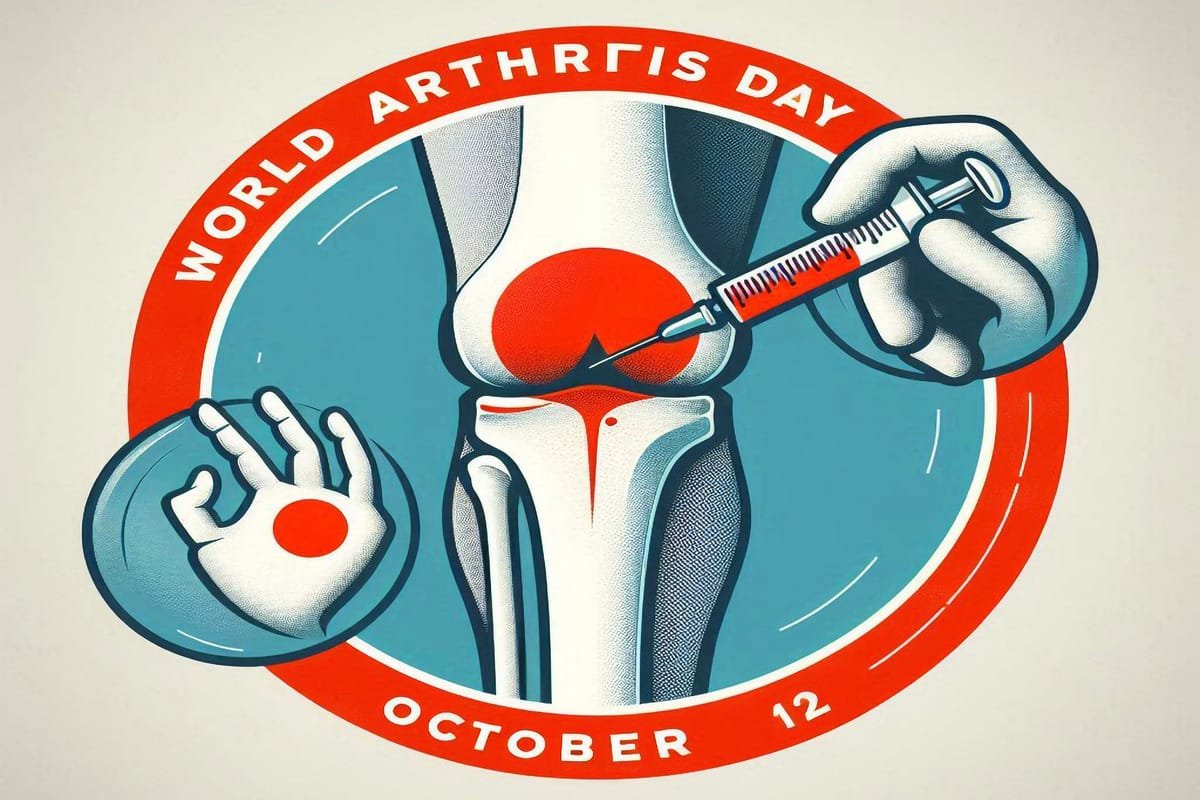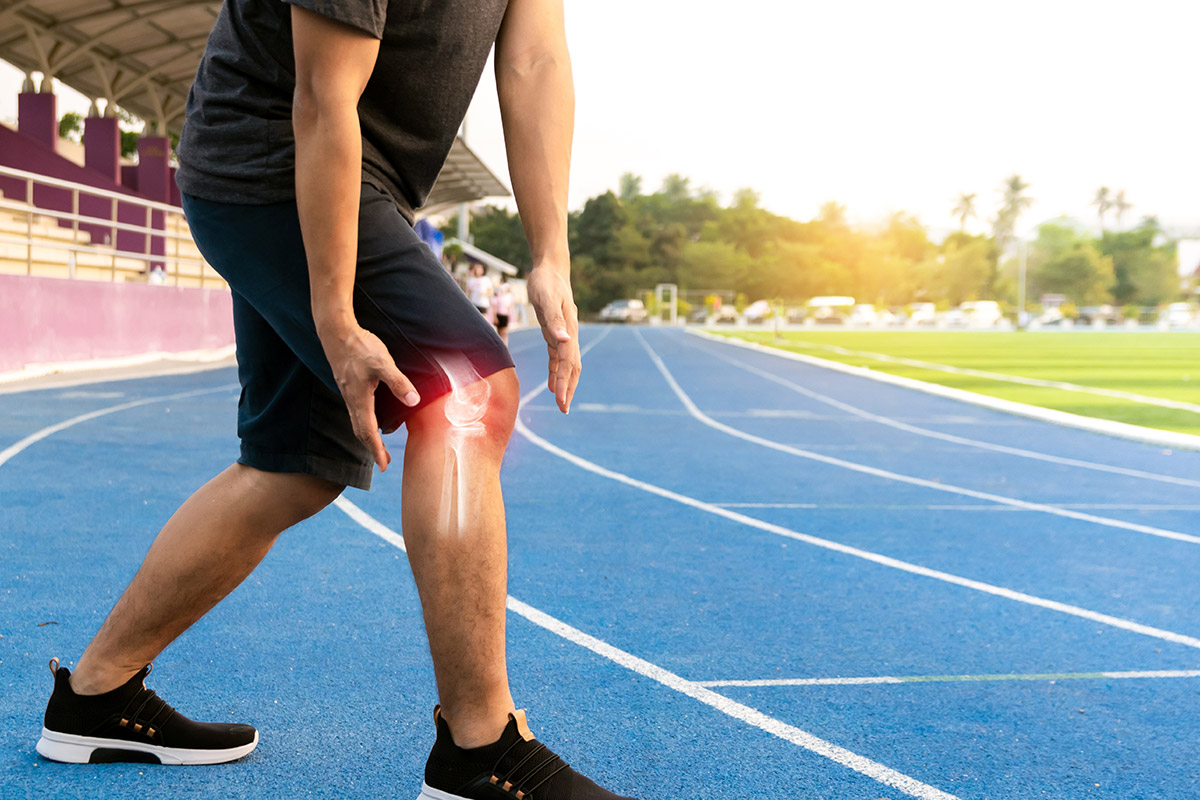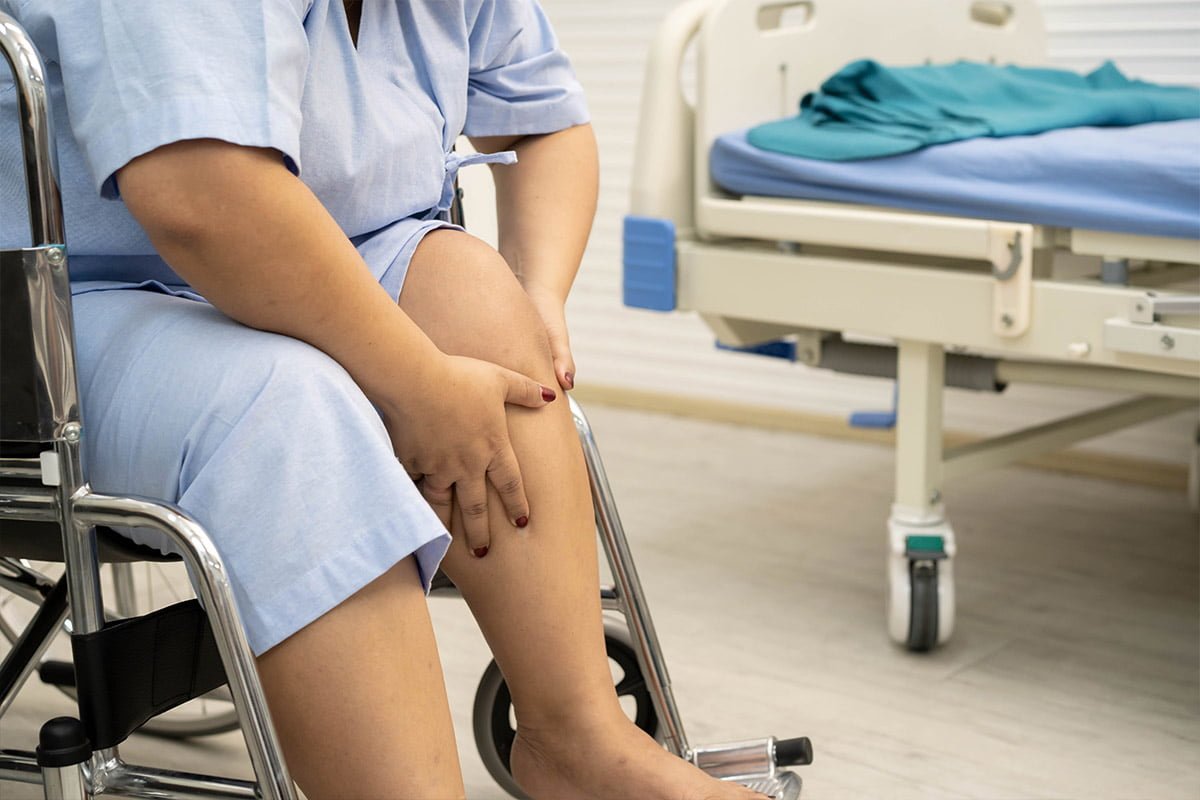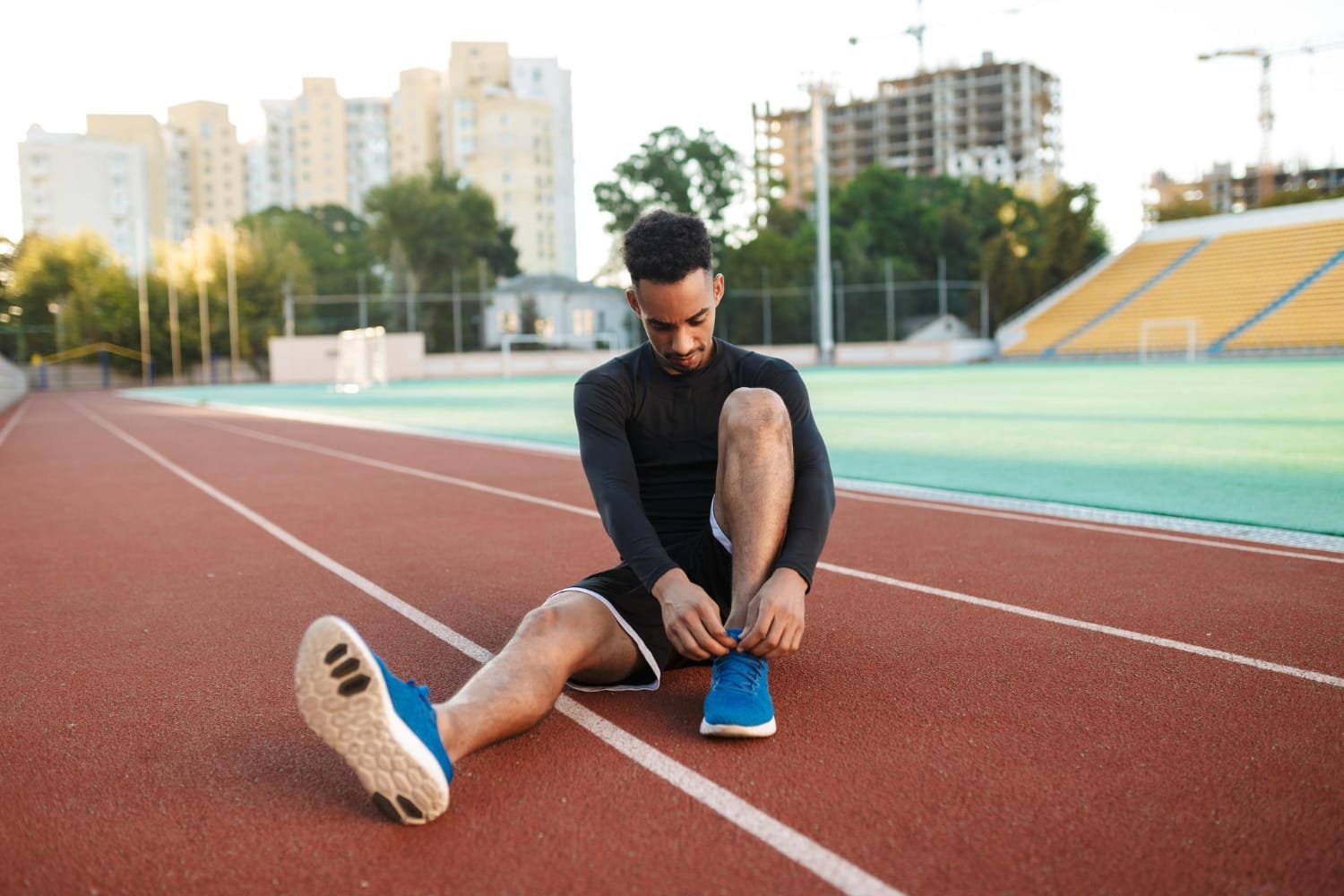
When Can You Return to Sports After Robotic Knee Replacement?
October 6, 2025Knee replacement surgery has evolved significantly over the years — from conventional methods to precision-driven robotic knee replacement. This advancement has transformed the way patients recover and return to an active lifestyle.
For many individuals, especially athletes or those who love sports, the most common question after surgery is:
“When can I safely return to sports after robotic knee replacement?”
The answer depends on several factors, including your overall health, type of surgery, rehabilitation progress, and the specific sport you wish to resume. In this blog, we’ll explore the stages of recovery, what to expect, and how expert guidance from specialists like Dr. Deepak Mishra, the best orthopedic doctor in Faridabad, ensures a safe and confident return to physical activity.
Understanding Robotic Knee Replacement
Robotic knee replacement is a modern surgical technique that uses computer-assisted technology and robotic precision to perform knee replacement with unmatched accuracy. Unlike traditional methods, where bone cuts are manually done, robotic systems help the surgeon plan and execute each movement precisely, ensuring better alignment, balance, and implant positioning.
Key Benefits of Robotic Knee Replacement:
- Enhanced precision and accuracy in implant placement
- Smaller incision and minimal tissue damage
- Reduced pain and blood loss during surgery
- Faster recovery and rehabilitation
- Improved joint movement and stability
- Better long-term performance, even in active individuals
Thanks to these benefits, robotic knee replacement has become a preferred choice for patients aiming to return to sports or maintain an active lifestyle.
Why Returning to Sports Requires Caution
Even though robotic technology accelerates healing, the replaced knee still needs time to adapt, regain strength, and stabilize. Returning to high-impact sports too soon can lead to complications such as implant loosening, joint strain, or injury to surrounding tissues.
It’s essential to understand that recovery is not just about the incision healing — it’s about your muscles, ligaments, and bones regaining the functional strength needed to withstand the demands of your chosen sport.
Phases of Recovery After Robotic Knee Replacement
The journey to sports recovery typically progresses through four main stages. However, timelines may vary depending on your fitness level, age, and rehabilitation adherence.
1. Immediate Post-Surgery Phase (Week 1–2)
- Focus: Pain management, mobility, and early exercises
- The patient begins walking with support within 24–48 hours post-surgery.
- Gentle range-of-motion and strengthening exercises are introduced under physiotherapist supervision.
2. Early Rehabilitation Phase (Week 3–6)
- Focus: Building muscle strength and improving flexibility
- Patients gradually increase walking distance and perform controlled knee bending exercises.
- Hydrotherapy or gentle stationary cycling may be introduced to improve endurance.
3. Advanced Strengthening Phase (Week 7–12)
- Focus: Regaining stability and coordination
- Exercises target the quadriceps, hamstrings, and calf muscles for improved support.
- Patients can begin climbing stairs, squats, and low-resistance exercises.
- Balance training and proprioceptive exercises help restore joint control.
4. Return-to-Sport Phase (3–6 Months and Beyond)
- Focus: Reintroducing sports and physical activities
- Low-impact sports like swimming, cycling, and golf are usually permitted after 3–4 months.
- Moderate activities like brisk walking, yoga, or dancing may resume around 4–6 months.
- High-impact or competitive sports such as running, tennis, or basketball are evaluated on a case-by-case basis — often after 9–12 months, depending on recovery progress and surgeon approval.
Safe Sports to Resume After Robotic Knee Replacement
While robotic precision enhances recovery, not all sports are equally safe for replaced knees. Sports are generally categorized based on their impact level:
Low-Impact Sports (Generally Safe)
- Walking and light jogging (after full recovery)
- Swimming
- Stationary or outdoor cycling
- Golf
- Tai Chi and Yoga
- Bowling
Moderate-Impact Sports (With Medical Clearance)
- Hiking
- Doubles tennis or badminton
- Low-intensity dancing
- Elliptical training
High-Impact Sports (Often Discouraged)
- Running or sprinting
- Soccer, basketball, or football
- Squash or singles tennis
- Martial arts and gymnastics
- Jumping or high-impact aerobics
Your orthopedic doctor will evaluate your joint strength, balance, and flexibility before allowing you to return to higher-impact sports.
Key Factors That Influence Return to Sports
1. Type of Sport
Sports that place less repetitive stress on the knee joint are safer to return to earlier. Low-impact activities promote circulation and maintain joint flexibility without overloading the implant.
2. Pre-Surgery Fitness Level
Individuals who maintained good fitness and muscle strength before surgery often recover faster and regain mobility earlier.
3. Surgical Precision and Implant Quality
Robotic knee replacement ensures perfect alignment and positioning, allowing smoother motion and a more natural knee feel — both of which enhance athletic performance post-surgery.
4. Rehabilitation Compliance
Regular physiotherapy, muscle strengthening, and gradual progression are vital for regaining full functionality. Skipping rehabilitation steps may delay or jeopardize recovery.
5. Medical Supervision
Returning to sports should always be guided by your orthopedic surgeon and physiotherapist. Premature physical exertion can cause unnecessary wear or injury.
Role of Physiotherapy in Returning to Sports
A structured rehabilitation program designed by your physiotherapist plays a vital role in determining how quickly and safely you return to sports.
Rehab focuses on:
- Restoring knee flexibility and full range of motion
- Strengthening supporting muscles
- Improving endurance and balance
- Preventing stiffness and scar tissue formation
- Enhancing confidence in joint movement
Adhering to this program ensures optimal implant performance and minimizes long-term risk.
How Robotic Surgery Helps Athletes and Active Individuals
Robotic knee replacement provides exceptional joint stability, allowing patients to perform sports movements with confidence. Its accuracy reduces human error and minimizes stress on soft tissues.
Key advantages for athletes include:
- Better joint balance and movement coordination
- Reduced post-surgery discomfort
- Enhanced durability of the implant
- More natural feel and flexibility
- Faster recovery timelines
These benefits empower patients to return to their favorite physical activities sooner, without compromising long-term knee health.
Expert Opinion: Dr. Deepak Mishra – The Best Orthopedic Doctor in Faridabad
When it comes to knee and joint replacement surgery, Dr. Deepak Mishra is widely regarded as the best orthopedic doctor in Faridabad. With extensive expertise in robotic and minimally invasive joint replacement, Dr. Mishra has helped numerous patients restore mobility and return to an active lifestyle with confidence.
His approach combines advanced surgical precision, personalized rehabilitation plans, and post-operative monitoring — ensuring every patient achieves the best possible recovery outcome.
Dr. Mishra emphasizes that returning to sports after knee replacement must be a gradual, medically guided process, tailored to each patient’s condition and activity goals.
Under his expert care, patients not only regain mobility but also rediscover the joy of movement — safely and sustainably.
Conclusion
Returning to sports after a robotic knee replacement is absolutely possible — but timing, patience, and medical supervision are crucial. Every knee heals differently, and your progress should always be evaluated by your orthopedic specialist.
The precision of robotic technology, combined with expert guidance from an experienced surgeon like Dr. Deepak Mishra, ensures faster recovery, minimal pain, and long-lasting joint function.
So, whether your goal is to walk pain-free, cycle again, or get back to your favorite sport — remember that the right care, gradual training, and discipline can help you make a strong, confident comeback.
Recent Blogs
-
 ACL Tears in Athletes: Symptoms, Treatment Options & Recovery
ACL Tears in Athletes: Symptoms, Treatment Options & Recovery- 19, November 2025
-
 Sports Injuries That Often Lead to Knee Replacement
Sports Injuries That Often Lead to Knee Replacement- 19, November 2025
-
 Orthopedic Care for Elderly Patients — A Complete Guide
Orthopedic Care for Elderly Patients — A Complete Guide- 12, November 2025
-
 How Long Do Knee Implants Last? (10–20 Year Longevity Guide)
How Long Do Knee Implants Last? (10–20 Year Longevity Guide)- 12, November 2025
-
 Importance of Early Diagnosis in Bone and Joint Problems
Importance of Early Diagnosis in Bone and Joint Problems- 28, October 2025
-
 Best Treatment Options for Sports Injuries
Best Treatment Options for Sports Injuries- 28, October 2025
-
 The Difference Between ACL Tear, Sprain, and Rupture
The Difference Between ACL Tear, Sprain, and Rupture- 16, October 2025
-
 Post-ACL Surgery Do’s and Don’ts
Post-ACL Surgery Do’s and Don’ts- 16, October 2025
-
 Early Signs You Might Have an ACL Injury (and When to See a Doctor)
Early Signs You Might Have an ACL Injury (and When to See a Doctor)- 16, October 2025
-
 Does Insurance Cover Robotic Knee Replacement Surgery?
Does Insurance Cover Robotic Knee Replacement Surgery?- 6, October 2025
-
 When Can You Return to Sports After Robotic Knee Replacement?
When Can You Return to Sports After Robotic Knee Replacement?- 6, October 2025
-
 Impact of Obesity on Knee Replacement Surgery and Recovery
Impact of Obesity on Knee Replacement Surgery and Recovery- 30, September 2025
-
 Early vs. Delayed Knee Replacement: Which Is Better?
Early vs. Delayed Knee Replacement: Which Is Better?- 30, September 2025
-
 How Durable Are Knee Implants? A Complete Guide
How Durable Are Knee Implants? A Complete Guide- 24, September 2025
-
 Can You Play Sports After Knee Replacement Surgery?
Can You Play Sports After Knee Replacement Surgery?- 24, September 2025
-
 Key Benefits of Revision Hip Replacement You Should Know
Key Benefits of Revision Hip Replacement You Should Know- 15, September 2025
-
 Revision Hip Replacement vs. Primary Hip Replacement: Key Differences
Revision Hip Replacement vs. Primary Hip Replacement: Key Differences- 15, September 2025
-

-
 Total Knee Replacement Complications: What You Need to Know
Total Knee Replacement Complications: What You Need to Know- 5, September 2025
-
 Can You Play Sports After Hip Replacement Surgery?
Can You Play Sports After Hip Replacement Surgery?- 26, August 2025
-
 Preparing for Knee Replacement: Do’s and Don’ts Before Surgery
Preparing for Knee Replacement: Do’s and Don’ts Before Surgery- 26, August 2025
-

-
 What to Know About Knee Replacement Revision Surgery
What to Know About Knee Replacement Revision Surgery- 18, August 2025
-
 Cost of Hip Replacement in India – What Patients Should Know
Cost of Hip Replacement in India – What Patients Should Know- 11, August 2025
-

-
 Who Is the Best Orthopedic Doctor for Sports Injuries?
Who Is the Best Orthopedic Doctor for Sports Injuries?- 27, July 2025
-
 Success Rate of Robotic Knee Replacement in India
Success Rate of Robotic Knee Replacement in India- 27, July 2025
-
 Why Surgeons Are Switching to Robotic Knee Replacements
Why Surgeons Are Switching to Robotic Knee Replacements- 15, July 2025
-
 Do’s and Don’ts After Knee Replacement Surgery
Do’s and Don’ts After Knee Replacement Surgery- 15, July 2025
-
 Best Robotic Knee Replacement in India
Best Robotic Knee Replacement in India- 7, July 2025
-
 Affordable Robotic Knee Replacement in India
Affordable Robotic Knee Replacement in India- 7, July 2025
-

-

-

-

-

-

-

-
 Orthopedic Meaning, Definition, Types, and More
Orthopedic Meaning, Definition, Types, and More- 6, June 2025
-
 What Are the Most Common Orthopedic Surgeries?
What Are the Most Common Orthopedic Surgeries?- 24, May 2025
-
 What Does an Orthopedic Doctor Do?
What Does an Orthopedic Doctor Do?- 24, May 2025
-

-

-

-
 Best Orthopedic Doctor for Knee Pain in Faridabad
Best Orthopedic Doctor for Knee Pain in Faridabad- 12, May 2025
-
 How to Prevent Knee Pain with Orthopedic Expert Tips
How to Prevent Knee Pain with Orthopedic Expert Tips- 29, April 2025
-

-
 Best Orthopedic Treatment in Faridabad: What You Should Know
Best Orthopedic Treatment in Faridabad: What You Should Know- 29, April 2025
-

-

-
 Best Knee Replacement Surgeon in Mathura
Best Knee Replacement Surgeon in Mathura- 14, April 2025
-
 Best Knee Replacement Surgeon in Hodal
Best Knee Replacement Surgeon in Hodal- 14, April 2025
-
 Best Knee Replacement Surgeon in Palwal
Best Knee Replacement Surgeon in Palwal- 14, April 2025
-

-

-

-
 Benefits of Minimally Invasive Knee Surgery
Benefits of Minimally Invasive Knee Surgery- 24, March 2025
-
 Types of Knee Implants
Types of Knee Implants- 17, March 2025
-
 Best knee Replacement Surgeon in India
Best knee Replacement Surgeon in India- 17, March 2025
-

-
 How to Recover Quickly After Knee Replacement Surgery
How to Recover Quickly After Knee Replacement Surgery- 10, March 2025
-

-

-

-
 Minimally Invasive Arthroplasty: Benefits and Recovery Advantages
Minimally Invasive Arthroplasty: Benefits and Recovery Advantages- 24, February 2025
-
 Common Mistakes to Avoid After Joint Replacement Surgery
Common Mistakes to Avoid After Joint Replacement Surgery- 24, February 2025
-
 Choosing the Right Hip Replacement Surgeon: A Comprehensive Guide
Choosing the Right Hip Replacement Surgeon: A Comprehensive Guide- 17, February 2025
-
 Restoring Mobility: The Role of Knee Replacement Doctors
Restoring Mobility: The Role of Knee Replacement Doctors- 17, February 2025
-
 Orthopedic Trauma Care for Athletes
Orthopedic Trauma Care for Athletes- 6, February 2025
-
 Best Doctor for ACL Tear Treatment
Best Doctor for ACL Tear Treatment- 6, February 2025
-
 Best Sports Medicine Doctor for Knee Injuries
Best Sports Medicine Doctor for Knee Injuries- 6, February 2025
-
 Orthopedic Surgeons: 7 Things You Need to Know
Orthopedic Surgeons: 7 Things You Need to Know- 27, January 2025
-
 Best Joint Replacement Surgeon in Greater Faridabad
Best Joint Replacement Surgeon in Greater Faridabad- 27, January 2025
-
 Best Knee Replacement Surgeon in Palwal
Best Knee Replacement Surgeon in Palwal- 20, January 2025
-
 Best Knee Replacement Surgeon in South Delhi
Best Knee Replacement Surgeon in South Delhi- 20, January 2025
-
 Signs You May Need a Knee Replacement: Insights from a Surgeon
Signs You May Need a Knee Replacement: Insights from a Surgeon- 13, January 2025
-
 Restoring Mobility: The Role of Knee Replacement Doctor
Restoring Mobility: The Role of Knee Replacement Doctor- 13, January 2025
-
 Robotic Knee Replacement Surgery in Delhi
Robotic Knee Replacement Surgery in Delhi- 30, December 2024
-
 Robotic Orthopedic Surgery: Revolutionizing Joint Replacement and Repair
Robotic Orthopedic Surgery: Revolutionizing Joint Replacement and Repair- 30, December 2024
-
 Robotic Knee Replacement vs. Traditional Surgery: A Comparative Guide
Robotic Knee Replacement vs. Traditional Surgery: A Comparative Guide- 23, December 2024
-
 How to Make Joints Stronger: A Comprehensive Guide
How to Make Joints Stronger: A Comprehensive Guide- 23, December 2024
-
 Common Knee Conditions and How a Knee Surgeon Can Help
Common Knee Conditions and How a Knee Surgeon Can Help- 16, December 2024
-

-

-
 Orthopedic Surgeons: 7 Things You Need to Know
Orthopedic Surgeons: 7 Things You Need to Know- 6, December 2024
-
 Top 5 Mistakes After Knee Replacement
Top 5 Mistakes After Knee Replacement- 25, November 2024
-
 Advantages and Disadvantages of Robotic Knee Replacement
Advantages and Disadvantages of Robotic Knee Replacement- 25, November 2024
-
 When to See an Orthopedic Specialist: Recognizing Early Signs
When to See an Orthopedic Specialist: Recognizing Early Signs- 15, November 2024
-
 Benefits of Robotic-Assisted Knee Replacement Surgery
Benefits of Robotic-Assisted Knee Replacement Surgery- 15, November 2024
-
 Knee Replacement Surgery Cost
Knee Replacement Surgery Cost- 8, November 2024
-
 Best Robotic Knee Replacement Surgeon in Faridabad
Best Robotic Knee Replacement Surgeon in Faridabad- 8, November 2024
-

-
 Knee Replacement Surgery: Types, Benefits, and Recovery Timeline
Knee Replacement Surgery: Types, Benefits, and Recovery Timeline- 28, October 2024
-
 What is Osteoporosis? Symptoms, Causes, and Prevention
What is Osteoporosis? Symptoms, Causes, and Prevention- 21, October 2024
-
 Signs It’s Time for a Knee Replacement: When to Consult a Surgeon
Signs It’s Time for a Knee Replacement: When to Consult a Surgeon- 18, October 2024
-
 Understanding Different Types of Arthritis: Symptoms and Causes
Understanding Different Types of Arthritis: Symptoms and Causes- 11, October 2024
-
 Taking Care After Knee Replacement Surgery
Taking Care After Knee Replacement Surgery- 15, December 2022
-
 Amazing Ways to Get Relief from Arthritis Pain Naturally
Amazing Ways to Get Relief from Arthritis Pain Naturally- 2, December 2022
-

-
 How Does Fat Affect Arthritis?
How Does Fat Affect Arthritis?- 4, November 2022


